
- Indoor Gardening
- Houseplants
- Hydroponics
- Houseplants Made Easy Book


How To Care For A Wandering Jew Plant (Your Complete Guide)
When it comes to houseplants able to brighten up indoor spaces, it doesn’t get much more colorful than the variegated foliage of a Wandering Jew plant ( Tradescantia zebrina ). With their hardy nature and ease of care, they are a perfect choice for those feeling they kill everything they bring indoors. We’ve listed a quick summary of their care below.
How To Care For A Wandering Jew Plant: Grow your Wandering Jew in well-drained soil, kept moist but not soggy through regular watering. Create humidity, keep indoor temperatures between 50°F (10°C) to 85°F (29°C) and fertilize monthly.
Continue reading because we’ve taken all the guesswork out of caring for your Wandering Jew and keeping it healthy and happy for years to come.
How To Care For A Wandering Jew Plant
Wandering Jew plants belong in the Commelinaceae family, which includes around 652 different species. The family is made up of herbs, climbers and several epiphytes, with some used as outdoor and indoor ornamentals like Wandering Jew.
There are three different plants commonly known as Wandering Jews; Tradescantia fluminensis , Tradescantia pallida , and Tradescantia zebrina. Of the three, Tradescantia zebrina is the most common one grown and has the most eye-catching and colorful foliage. All three have the same requirements for care and good growth.
Native to Mexico and Guatemala, Wandering Jew is classified as a tender evergreen perennial that performs well planted outdoors in frost-free regions. Those living in cooler environments can easily grow it as an indoor plant planted either in containers or in hanging baskets. Outdoors it’s typically used as a quick-growing groundcover.
Although a common name shared with several very different plants, Wandering Jew is often called Inch Plant , due to the leaf margins being spaced about an inch apart. You may also find Wandering Jew listed as Zebrina Pendula , but is synonymous with Tradescantia zebrina and is the same plant.

When it comes to Wandering Jew plants, it’s all about the attention-grabbing foliage. The succulent stems give way to leaves that are a deep purple on their undersides with the upper portion striped in silvery-gray and greenish-blue. The oval leaves grow to about 2.5 inches long and the stems grow about 2 feet long. It makes a beautiful plant used in hanging baskets, with the long stems cascading over the side.
Even grown indoors, Wandering Jews have a fast rate of growth and before you know it, the plants will be spilling over your container’s or hanging basket’s sides. Whereas some indoor plants seem to take forever to fill out, this isn’t a problem with properly cared for Wandering Jew plants.
There are several other cultivars (varieties) of Wandering Jew, which include:
- ‘Purpusii’ has unstriped, hairy foliage that is either solid red or reddish-green.
- ‘Quadricolor’ produces metallic-green foliage striped in red, white and green.
Wandering Jew plants are the ideal candidates for beginner houseplant gardeners due to their hardiness and robust growth. Below we’ve outlined all the basics of their proper care, as well as identifying and preventing any potential problems so you can enjoy your Wandering Jew for years to come. The best indoor plants are those that are happy and healthy.

Soil Conditions For Wandering Jew Plants
Wandering Jew plants tolerate growing in a wide range of soils provided they drain well. Although they do tolerate and prefer moist conditions, the soil must drain properly to prevent root and stem rot from occurring. Therefore, it is necessary to use a lighter weight soil mixture in your pots rather than heavier soils that don’t provide proper drainage.
Straight potting soils are usually too heavy, retain too much moisture and have a tendency to leave the soil soggy. You can use a heavier potting soil in your soil mixture, just be sure to incorporate a lighter soil mix to provide the Wandering Jew the drainage required for healthy growth.
Commercial potting mixes work well and many have a slow-release fertilizer mixed in, which cuts down on the need for frequent feedings. The slow-release blends usually continue to fertilize the Wandering Jew for about three months.
You can also make your own soil by mixing several ingredients together such as:
- Using equal parts of compost and a potting mix.
- Mixing equal portions of compost, peat and potting soil or a potting mix.
- Using equal portions of a course sand, compost and potting soil or a potting mix.
Whatever soil you choose to use, just make sure it drains well and contains a bit of fertility for the best performance of your Wandering Jew plants.
Preferred Light Conditions
Although Wandering Jew plants tolerate lower light conditions than many houseplants, to help retain those striking colors the plant is known for, place the container in a location indoors receiving filtered sunlight. If your plant starts losing some of the color in the foliage, move it to a location that receives a bit more light.
In addition, if the lower portion of the stems start suffering leaf drop, the Wandering Jew isn’t get enough light and needs to be relocated to a brighter area inside the home.
Once the warm weather of spring arrives and if you’d like to give your Wandering Jew a bit of a break from its indoor location, place it in an outdoor spot that receives partial sun to partial shade. Moving it to an outdoor location with too much sun may leave the foliage sunburned.
Indoor Temperature Requirements
In the Wandering Jew’s native environment, temperatures are consistently warm without the threat of frosts or freezes. Generally, if the indoor temperatures inside your home are comfortable for you, they will also be comfortable for your Wandering Jew plant.
Indoor temperatures between 50°F (10°C) to 85°F (29°C) are a good range for your Wandering Jew plants. Plants grown in this temperature range produce the healthiest growth.
If you gave your plants a break from their indoor location, just make sure to bring them back indoors before the cold weather of winter strikes.
Water Requirements
Wandering Jews prefer soils that are regularly kept moist, not soggy, compared to many indoor houseplants. However, this doesn’t mean the soil should be kept so wet they never begin to dry out. Keeping the soil too wet for too long promotes rot to set in and you may end up killing your Wandering Jew plants. Your Wandering Jew is more likely to forgive you if you forget to water over watering too much and too often.
A good rule to follow is if the soil starts to feel like it’s about to become very dry, apply water. It’s easy to know exactly when to water by:
- Sticking your finger into the soil and if the top inch is starting to feel dry, water until it runs from the container’s bottom drain holes.
During the warm growing season of spring through summer, you can probably expect to water once each week. However, during winter when the Wandering Jew goes into dormancy (its growth slows), you will probably only need to water about every other week.

Humidity Requirements
Compared to many tropical plants grown indoors, Wandering Jew plants aren’t quite as fussy about humid conditions , but still need some humidity for the best growth and performance. Don’t let the thought of creating a humid environment stress you out because replicating humidity for your indoor plants is relatively easy and basic.
- Fill a spray bottle with room temperature water and mist the Wandering Jew several times each week.
- If you’re growing the Wandering Jew in a container and not in a hanging basket, you can set the pot on a tray of pebbles. As you water, the water seeps from the bottom drain holes onto the tray of pebbles and as it evaporates, it creates a humid environment around the plant.
- If your bathroom gets the appropriate amount of light for the Wandering Jew, you can allow it to grow there. Due to the regular use of water in a bathroom, moisture is created, creating the humidity the Wandering Jew requires.
Fertilizer Needs
Unless the soil mixture contains a slow-release fertilizer blend, which feeds the Wandering Jew for about three months, fertilizing monthly is sufficient for proper growth. You have several choices when it comes to fertilizer you can use for your Wandering Jew plant.
- Use a houseplant fertilizer applied at half-strength, applied when you do your regular watering.
- Use an all-purpose, water-soluble blend for outdoor and indoor plants, applied at half-strength and used during your regular watering schedule.
- If your soil mixture didn’t contain a slow-release fertilizer or it’s been about three months, if one was contained in the soil, you can reapply slow-release fertilizer granules sprinkled over the top of the soil. Follow the package directions on amounts.
When it comes to the appropriate time of year to fertilize the Wandering Jew, only fertilize while it’s actively growing, which is spring throughout summer. In winter, the plant goes through a dormant stage and all growth slows, so there is no need to apply fertilizer. Wait until spring arrives before you resume fertilizing the plant.
The one thing you will need to pay attention to when it comes to fertilizing is the buildup of salts in the soil, which can result in foliage burns. Wandering Jew plants have a low tolerance to salty soils. Preventing any salt buildup is relatively simple:
- If the plant isn’t too big, you can take the entire pot to your sink or bathtub and allow water to run slowly through the soil for about five minutes, flushing out any salts.
- If the plant is too big for indoor flushing, take it outside and allow water from the hose to run slowly through the soil for about five minutes. Allow the water to drain and then bring the plant back indoors.
Pruning Requirements
The pruning needs of Wandering Jew plants are low. If you want to control the size of the plant and promote bushier growth, you can pinch off the tips of the stems. To keep the plant always looking its best, you can trim off any broken, dead or damaged stems and leaves throughout the year.
When using pruning tools to trim your Wandering Jew always make sure they are clean so you don’t transfer any diseases or pests to your plant. This is as easy as wiping off the blades with alcohol.
Some people experience skin irritations when handling the cuttings due to the sap , so if you are unsure if you are one of these unlucky gardeners, it might be best to wear gardening gloves when pruning or handling Wandering Jew cuttings.
Potting Needs
If you purchased your Wandering Jew already potted in a hanging basket or 1-gallon container, it should thrive as is for a year or more before it requires repotting. However, if you received rooted cuttings in smaller containers like 4- to 6-inch pots, you most likely need to repot them into something a bit larger so they can grow properly.
This also cuts down on the need for repotting in a month or two as the Wandering Jew begins to outgrow its present pot.
When it comes to the pot’s material, any type works quite well for growing this plant from clay to plastic. However, if you grow your Wandering Jew in a pot made of a porous material like terra cotta, the soil is going to dry quicker than if it was growing in a plastic pot. This means you will need to water more frequently.
Once your Wandering Jew starts getting too big for its present container, it’s time to repot it into one that is around 1- to 2-inches larger. Although the plant likes a moist soil, make sure the pot has bottom drainage to prevent the possibility of rot due to conditions that are too wet.
If you like, you can dress the container up by placing the draining one inside a decorative pot without bottom drain holes, but be sure to empty out any additional water once the inner pot thoroughly drains.
I think a decorative outer pot can add so much to the beauty of your houseplants, so I do this with almost all of my houseplants. Read this article which discusses my favorite decorative planters if you need some inspiration.
Potting and repotting your Wandering Jew is basic:
- Gently remove the Wandering Jew from its present container, being careful not to break the succulent stems.
- Fill the new container that drains about a quarter of the way full with a fertile, well-drained potting mix.
- Check the Wandering Jew’s root system and if it’s growing bunched together and filled the previous pot, gently tease the roots apart with your hands.
- Place the Wandering Jew into the new container and finish filling it with soil.
- Water the Wandering Jew until it runs from the bottom drain holes and place in a bright location indoors.

Propagating New Plants
When it comes to propagating new plants, Wandering Jew is about as easy as it gets. Even if you have never done this before you should have success starting its cuttings. When you trim to control its size, don’t throw those cuttings away but use them to start additional plants.
You have two choices when it comes to rooting your cuttings and both are easy. The first thing you will want to do is obtain your cuttings. Trim off a 4- to 6-inch cutting from the mother plant and you’re ready to start rooting.
Rooting in Soil
- Fill a 6-inch to 1-gallon container that drains with a rich, well-drained potting mix. Water the soil to settle it.
- Make about a 2-inch indentation in the soil where you want to place the Wandering Jew cutting.
- Remove the bottom leaves from the cutting where you will be inserting it into the soil. You can do this by pinching them off with your fingers.
- Place the cutting into the indentation and firm the soil up around it with your fingers.
- Water the soil again and place the cutting in the same light conditions where the mother plant was thriving. Keep the soil moist but not soggy.
Roots should form in about four weeks and after about eight weeks, the Wandering Jew cuttings should form a new root system.
Rooting in Water
- Fill a glass jar or plastic container with about 3-inches of room temperature water.
- Pinch off any leaves from the section of the Wandering Jew cutting that will be submerged in the water.
- Place the cutting in the water and situate the container in a bright indoor location.
- Change the water in the container about every other week, or when cloudy.
You should start seeing new roots form on the cuttings in several weeks. Once the roots are several inches long, you can repot the cuttings into a draining container filled with fertile, well-drained soil.
Disease Problems
Wandering Jew plants grown indoors are hardy and don’t have major diseases that plague them. However, rot is their biggest enemy and caused by soils that are too heavy and do not drain properly, retaining too much water. Overwatering and planting in pots that don’t drain are other causes of rot problems.
When rot rears its ugly head you’ll notice the bottom stems, as well as the foliage turning black, becoming mushy and the entire plant collapses. If this happens and seems to start affecting the entire Wandering Jew plant, you can trim off healthy, unaffected sections of the stems and repot into fresh, clean soil. Since there is no saving the rot-infected sections, you will have no choice but to discard those portions of the plant.
Steps for preventing problems with rot include:
- Using lightweight potting mixes that drain well and aren’t too heavy, which leads to the soil remaining too wet for too long. Some types of potting soils have a tendency to be heavy and need mixing with a potting mix, compost, coarse sand or peat.
- Don’t overwater your Wandering Jew. Although they prefer growing in moist soils, this doesn’t mean constantly soggy soil. Stick your finger into the soil and if the top inch is starting to become dry, apply water until it runs from the bottom of the pot.
- Make sure the pot you are growing your Wandering Jew in has bottom drainage. If you have placed the pot inside a decorative one that doesn’t drain, make sure to empty all the water from it after you have watered.
Pest Problems
Although indoor Wandering Jew plants are not big candidates for problems with pests, several can cause an infestation and problems. As with any pest problem indoors or outside in the garden, quick control is always the best option to keep your plants healthy. It also assures the pests do not migrate to your other plants causing even bigger problems and headaches.
The pests most likely to infest your indoor Wandering Jew plants are:
- Aphids: Aphids come in a host of different colors and are tiny, pear-shaped, sap-sucking insects that usually congregate in large masses along the Wandering Jew’s stems. In large infestations, they can kill the plant or severely weaken it. If the infestation is small, you can wipe the pests off the stems with a moist cloth. However, if the infestation is large, you will probably have to spray the plant with an insecticidal soap or Neem, reapplying as suggested on the package.
- Spider Mites: Spider mites are another sap-sucking pest that if left unchecked can quickly kill or weaken the Wandering Jew. It is easy to tell if you have a spider mite problem as these tiny, white pests spin fine webbing that covers the plant. Spider mites can be the bane of houseplants so quick control is necessary. Use an insecticidal soap or Neem and spray the entire plant, reapplying as suggested on the product label.
- Whiteflies: Whiteflies are other sap-sucking pests that can quickly kill or weaken your Wandering Jew if not quickly controlled. They are another easily identifiable pest, as just touching the plant sends the tiny whiteflies from the plant’s foliage and into the air, hovering right above it. Control the problem with an insecticidal soap or Neem, spraying the entire plant and reapplying as suggested on the product’s label.
- Mealybugs: Sap-sucking mealybugs show up on the Wandering Jew as cottony masses covering the stems and crotches of the foliage. Control the problem by spraying the entire plant with insecticidal soap or Neem, reapplying as suggested on the product’s label. If the infestation is small, you can also wipe them from the stems and leaves with a damp cloth.

Is Wandering Jew A Perennial?
Wandering Jew plants are considered a tender, evergreen perennial. Unlike annuals, and if grown in preferred conditions with proper care, Wandering Jews should live and keep on growing for quite a few years, both indoors and outside.
Why Are My Wandering Jew Plant’s Leaves Losing Their Color?
If your Wandering Jew is growing in light conditions that are too low, the leaves will start to lose their color and become duller. When grown indoors and to keep the bright color on the foliage, make sure the Wandering Jew is growing in a location receiving bright light.
Why Are My Wandering Jew’s Leaves Dropping?
Wandering Jew plants grown in light conditions that are too low will start dropping leaves at the base of their stems. Solve the problem by moving the plant to an indoor location that is brighter. For the best leaf color and growth, they prefer an indoor location receiving bright light.
Why Are My Wandering Jew Cuttings Rotting In Soil?
If your Wandering Jew cuttings are rotting in soil it could be one of two things causing the problem. The soil you are growing the cuttings in may be infected with a fungus that is infecting them with rot.
You can solve the problem by planting the cutting in a sterile, well-drained potting mix. Another cause might be the soil is remaining too soggy and the container doesn’t drain.
Make sure you are using a soil that drains well and doesn’t remain soggy, do not overwater and use a container with bottom drainage. Water the cuttings when to top inch of soil feels dry to the touch.
Can I Root Wandering Jew Cuttings In Water?
Wandering Jew cuttings root quite well in water. Fill a container with several inches of water, remove any leaves that would be submerged and stick the cut end into the water.
Fill the container with fresh, clean water about every other week. You should start seeing root form on the cuttings in several weeks. Once the roots get several inches in length, you can repot the cuttings in a draining container with rich, well-drained soil.
Are Wandering Jew Plants Toxic?
When it comes to humans, Wandering Jew’s sap can cause skin irritation in humans that are allergic to it. Therefore, it’s best to wear gardening gloves when handling or pruning the plant.
The plant is listed as toxic to dogs and cats, due to its tendency to cause skin allergies and dermatitis. To keep your pets and children safe, make sure you situate your indoor Wandering Jew out of the reach of both.
If you’d like some indoor plants that are non-toxic, check out this article which discusses my favorite non-toxic houseplants.
Do Wandering Jew Plants Produce Blooms?
When grown outdoors, Wandering Jews produce small, three-petaled, lavender flowers, but the plant rarely ever blooms grown indoors as a houseplant.
Can I Grow Wandering Jew Outdoors?
Wandering Jew plants grow as perennials planted outdoors in frost-free climates, however, those with cooler weather can plant outdoors and treat it as an annual.
What’s The Growth Rate For Wandering Jew Plants?
When grown in proper conditions with proper care, Wandering Jew plants are considered fast growers.
Many thanks for reading my guide to Wandering Jew care. This really is a great indoor plant for your home. Beautiful and easy to care for, its hard to go wrong.
If you want more help with looking after your indoor plants, check out the rest of my articles , and head over to my resources section , where I have some great recommended resources, books and equipment to help you grow healthier, more beautiful plants.

Wandering Jew Plant – Ultimate Care Guide
By: Author Daniel
Posted on Last updated: September 18, 2023

Sharing is caring!
- Facebook 60
You are reading this guide to learn more about the Wandering Jew Plant and its care . I have had this plant at home for many years and write about all the growing aspects in this guide.
Wandering Jew Plant Care Takeaways
What is the wandering jew plant.
The Wandering Jew, or Tradescantia zebrina, by its scientific name (old name = Zebrina pendula) is native to Mexico. It is not to be confused with Tradescantia albiflora, which also goes by Wandering Jew and has very similar care needs.
Tradescantia zebrina has attractive foliage, sporting exciting zebra-patterned leaves. It also flowers. But when kept as a houseplant, this rarely ever happens. It is a fast-growing and excellent groundcover, according to the University of Florida .

W andering Jew Plant Care
To keep your Wandering Jew plant thriving, ensure it receives bright, indirect sunlight. Keep it in average room temperatures of 60-75°F (16-24°C). Fertilize once a month during spring and summer. In winter, relocate the plant to a cooler area with temperatures of 54-59°F (12-15°C).
Table of Contents
Tradescantia zebrina Growing guide
Tradescantia zebrina care is pretty straightforward, but it certainly can’t hurt to glance at the most important things to consider when caring about this herbaceous perennial plant.
So, without further ado, let’s see how you can make your Wandering Jew, aka the Inch plant, as happy as possible.
Any good potting soil will do for your Wandering Jew. For instance, this could be Miracle Gro potting soil readily available online in stores like Amazon.
But these plants not only feel very comfortable in soil but can also be kept in hydroponics .
Sunlight is a vital aspect when it comes to the well-being of most houseplants. Some houseplants do well with moderate sunlight, while others only thrive (or flower) when a certain level of sunlight is guaranteed.
The Wandering Jew does best in bright, indirect sunlight .
If you are unsure what that means, please look at our Light Levels article.
The Wandering Jew, a tropical native, thrives best when the root ball is always well moisturized. Still, waterlogging should be avoided whenever possible, as this could lead to root rot .

This tropical plant does not enjoy limy water. Use soft water whenever possible. Rainwater and distilled water are very good choices.
Temperature
People who own an Inch plant and keep it outside run the risk of exposing it to cold temperatures. This is where indoor plant owners have the upper hand.
Wandering Jews can thrive with average room temperatures of 60 to 75°F (16 to 24°C) if it doesn’t drop for long periods. Anything below 12°C for an extended period could be fatal for your Wandering Jew.
Wandering Jews prefer a humidity of around 70%
The perennial, herbaceous Wandering Jew plant is native to Mexico, Central America, and Colombia, so it should not surprise you that it likes a good deal of humidity.
To ensure high humidity levels, regularly misting your plant is a very good idea. A hand mister filled with water does the trick.
As for the location, you may want to keep your Wandering Jew in the bathroom , as this is usually the place in the house with the highest humidity.
Feed your plant once a month during spring and summer. In winter, fertilizing is not necessary.
Also, fertilization of the Wandering Jew is only necessary from the second year of cultivation or after repotting.
Propagation
It is best propagated through stem tip cuttings. Propagating the Wandering Jew is an easy task.
Wandering Jews don’t get very tall. They might reach a height of about 14 inches (36 cm) when kept indoors. They spread to about 10 inches (25 cm).
(Re)potting
The thing with the Wandering Jew is that it grows fast , hence its nickname “Inch plant.” Because of its fast-growing pace, the plant usually gets very leggy, and leaves are often lost near the base of the plant.
Repotting is pivotal for keeping the root system healthy regardless of the actual plant species. However, how often a houseplant needs to be repotted depends on various factors.
Some houseplants grow incredibly fast, so they need to be repotted often. Others, on the other hand, grow very slowly, so repotting is not a top priority.
That said, repotting your Wandering Jew occasionally is a good idea.
How long does a Wandering Jew live?
As far as the longevity of Wandering Jews goes, they often don’t get older than 2 to 3 years.

Wandering Jew Watering
Water about once every 5-7 days in spring and summer. Keep the soil slightly humid. Do not let the Wandering Jew dry out between waterings. Use your index finger to check if the soil is dry down 1-2 inches of soil (2.5 – 5 cm).
Reduce watering to every 10-14 days in autumn and winter.
Wandering Jew Propagation
The Wandering Jew roots very easily . The plant can easily be propagated through stem tip cuttings.
When propagating your Wandering Jew, make sure that your plant is in a healthy condition.
Please follow our step-to-step guide to propagate your Wandering Jew through stem tip cuttings.
Propagation through stem tip cuttings
- Identify the plant that you want to replicate. It should have healthy growth and plenty of stems.
- Make clean cuts on sections that are three to six inches in length .
- Use a sharp knife and carefully cut the leaves on the stem’s bottom half.
- If you want, you can dip the exposed end of the stem in a rooting hormone . This will speed up the rooting process. However , it is unnecessary .
- Place your stem tip cuttings into a pot with fresh soil after thoroughly watering the potting mixture.
- Use a clear plastic bag to hold in moisture, taking it off to water weekly .
- Keep your eyes on the plant for new growth . You should start to see roots in about two to three weeks . Once this happens, transfer the plant babies to a larger pot.
Note: Instead of rooting your stem tip cuttings directly in soil, you could also root them in water .
Wandering Jew Pest Control
Wandering Jews are prone to aphids and spider mites attacks. So, you will need to look out for these two little pests.
Some of these are known to cause defoliation, while others can kill the plant altogether. Depending on the severity of the infestation, you may need to use chemicals or insecticides .
Aphids on my Inch Plant
The Wandering Jew is not particularly susceptible to plant diseases or pests. Yet, you might have to deal with an aphid attack at some point. These parasites pierce the leaves of their host plant and suck their sap.
Like scale insects, they excrete sticky honeydew, by which you can immediately recognize the infestation.
Aphids can multiply explosively, especially in warm , dry environments.
As a preventive measure, ensure regular watering and occasional misting of your Wandering Jew.
The best way to combat aphids is to control them mechanically by rinsing them off the plant with water . Isolate the plant from the rest of the collection.
Pest Prevention
To prevent the Wandering Jew from pest infestations, plucking dried leaves regularly makes sense as well as using neem oil. The dried leaves lying on the substrate must be removed. Otherwise, there is a risk of rotting or infestation by parasites and fungi .
Wandering Jew Problems
Brown leaf tips.
Brown leaf tips is a very common problem with a wide variety of houseplant. Depending on the species, the causes for this problem can be very different, though.
So what causes leaves to turn brown with Wandering Jews?
My Wandering Jew has only green leaves (not enough variegation)
If you do own a variegated Wandering Jew but only see a great amount of non-variegated leaves, chances are that your plant does not get enough sunlight .
To solve the problem, allow your Wandering Jew some bright, indirect sunlight by placing it in a sunnier location.
Fading leaves
If your inch plant’s foliage is suddenly losing color and sports fading leaves, this is another sign that it does not get enough sunlight .
Dropping leaves
Dropping leaves is another very common problem many plant parents must deal with regularly . If your Wandering Jew drops leaves, this is usually due to too low or too high temperatures .
In summer , ensure your Wandering Jew is exposed to average room temperatures.
In winter , it should be kept in a cooler environment.
Is Wandering Jew care difficult?
Wandering Jews are considered low-maintenance plants and are perfectly suitable for beginners.
They do well at average room temperatures, don’t demand a very high level of humidity (which is sometimes difficult to achieve in a home environment), and it is very easy to propagate them through stem tip cuttings.
Which plant species are commonly referred to as “Wandering Jew”?
Tradescantia zebrina as well as Tradescantia albiflora.
What is the difference between Tradescantia zebrina and Zebrina pendula?
There is no difference between Tradescantia zebrina and Zebrina pendula. Zebrina pendula is just the old name for Tradescantia zebrina.
Does my Wandering Jew flower at all?
Wandering Jews are indeed flowering plants. However, when kept indoors, they very rarely flower.
How long can you keep a Wandering Jew?
If you don’t propagate your Wandering Jew, you can keep it for about three years. After that period, the quality of your Wandering Jew will most likely decrease. If you regularly propagate your leafy friend through stem tip cuttings, you can keep it indefinitely.
Any display tips for Wandering Jews?
Wandering Jews look great in hanging planters!
Is the Wandering Jew toxic to cats?
The Wandering Jew plant is toxic to cats. Therefore, you have to keep your cat away from this plant.
Is the Wandering Jew toxic to dogs?
Yes, the Wandering Jew plant is toxic to dogs. Therefore, you must ensure your dog does not come in contact with this plant.
What are the health benefits of Tradescantia zebrina, if any?
Not only is The Wandering Jew a beautiful houseplant famous for its striking foliage, but it also presents several health benefits for humans. It is especially known for its antioxidant and antibacterial activity, and it is widely used in Traditional Medicine in several countries. Tradescantia zebrina is also believed to be a valuable source for treating kidney diseases.
The Last Zebrina
The Wandering Jew is a great houseplant that looks stunning in hanging planters. Its care is easy apart from its humidity-loving nature.

Daniel has been a plant enthusiast for over 20 years. He owns hundreds of houseplants and prepares for the chili growing seasons yearly with great anticipation. His favorite plants are plant species in the Araceae family, such as Monstera, Philodendron, and Anthurium. He also loves gardening and is growing hot peppers, tomatoes, and many more vegetables.
Related Posts
(image credits, IG:oohyouplantsy) I have a hide-away in my home that I escape to for…
How much light does my plant need? This is a relevant question as too little…
I love plants that offer an eye-catching burst of color. They sure put a smile…
Most of the 45+ species in the Monstera genus are famous for their unusual leaves…
One of the rarest Anthuriums is the Anthurium Reflexinervium, a gorgeous plant naturally found only…
Hoya Lauterbachii belongs to Hoyas's family, which are known to be the largest plants on…
- PRO Courses Guides New Tech Help Pro Expert Videos About wikiHow Pro Upgrade Sign In
- EDIT Edit this Article
- EXPLORE Tech Help Pro About Us Random Article Quizzes Request a New Article Community Dashboard This Or That Game Popular Categories Arts and Entertainment Artwork Books Movies Computers and Electronics Computers Phone Skills Technology Hacks Health Men's Health Mental Health Women's Health Relationships Dating Love Relationship Issues Hobbies and Crafts Crafts Drawing Games Education & Communication Communication Skills Personal Development Studying Personal Care and Style Fashion Hair Care Personal Hygiene Youth Personal Care School Stuff Dating All Categories Arts and Entertainment Finance and Business Home and Garden Relationship Quizzes Cars & Other Vehicles Food and Entertaining Personal Care and Style Sports and Fitness Computers and Electronics Health Pets and Animals Travel Education & Communication Hobbies and Crafts Philosophy and Religion Work World Family Life Holidays and Traditions Relationships Youth
- Browse Articles
- Learn Something New
- Quizzes Hot
- This Or That Game New
- Train Your Brain
- Explore More
- Support wikiHow
- About wikiHow
- Log in / Sign up
- Home and Garden
- Indoor and Patio Plants
A Complete Guide to Wandering Jew Plant Care
Last Updated: March 27, 2024 Fact Checked
- Potting Your Plant
- Caring for Your Plant
Preventing Pests & Disease
Expert q&a, things you'll need.
This article was co-authored by Chai Saechao and by wikiHow staff writer, Dev Murphy, MA . Chai Saechao is the Founder and Owner of Plant Therapy, an indoor-plant store founded in 2018 based in San Francisco, California. As a self-described plant doctor, he believes in the therapeutic power of plants, hoping to keep sharing his love of plants with anyone willing to listen and learn. There are 12 references cited in this article, which can be found at the bottom of the page. This article has been fact-checked, ensuring the accuracy of any cited facts and confirming the authority of its sources. This article has been viewed 635,761 times.
Wandering Jews are beautiful vining plants known for their solid or variegated leaves. These hardy perennials thrive outdoors as groundcover or in pots that allow their tendrils to cascade. They’re relatively easy to care for and incredibly simple to propagate, making them great houseplants! Keep reading for an easy step-by-step guide to Wandering Jew maintenance, from planting to watering to pruning.
Things You Should Know
- Keep your Wandering Jew in a warm spot (around 50–80 °F (10–27 °C)) with lots of bright, indirect sunlight.
- Pot your plant in well-draining potting soil in a container with drainage holes. Keep the soil moist, but not soaking wet.
- Pinch or prune the leaves when the plant gets leggy to promote bushiness, or when any leaves or vines begin to brown or rot.
Potting Your Wandering Jew Plant

- Refer to this map to see if your area's temperatures are warm enough to support a Wandering Jew plant, if you're planning on keeping it outside. According to the USDA, the Wandering Jew plant grows best in zones 9-11.
- If you don’t live in USDA hardiness zones 9-11, keep in mind that you may not be able to keep your plant outside during the winter. You may want to grow it inside instead.

- If you use a hanging basket, remember to turn it daily so it gets equal amounts of sunlight.
- If you’re hanging your plant, choose a lightweight or plastic pot so it won’t fall. This also makes it easier to move inside in case of frost.

- Be careful not to use soil that’s too heavy, as Wandering Jews need light soil that drains well. [3] X Research source
- Buy well-draining soil, or, if you already have heavier soil, mix equal parts soil with compost, or equal parts soil, compost, and peat.
- Purchase a Wandering Jew plant at a gardening or home improvement center, or propagate cuttings from established plants . Wandering Jew cuttings grow very quickly.
Watering, Fertilizing & Pruning Your Plant

- If you’re growing your plant indoors, an eastern facing windowsill is a good spot. The plant will receive bright indirect light throughout the day, but watch to make sure the space doesn't become too hot in the afternoon. If so, move the pot a few feet away or use a curtain to filter the light. [5] X Research source
- If the plant primarily remains outside, find a spot that receives indirect sunlight. This could be on a porch that gets morning sun for several hours. Just make sure that it's not sitting in direct sunlight without any shade for most of the day.

- If you've set your pot on a saucer, empty the saucer when it fills.
- The plant's growth will slow in the winter months, meaning it needs to be watered less often. Simply let it remain a little dry for a bit longer before watering.
- Some people find it convenient to put self-watering aqua globes in their plant pots; however, these glass globes require cleaning and regular filling. You'll still need to monitor your plant's moisture if you choose to use them.

- Read the container's instructions carefully before fertilizing, as some liquid fertilizers may actually be powders requiring you to mix in water.

- The best time to prune is during the spring and summer months, when the plant is putting on the most growth. After you've pruned, give the plant a chance to put on new shoots and fill in.
- If you find your plant is too dense and bushy, you'll need to prune around the base so that the plant can get adequate circulation and sunlight.

- Generally, expect to repot your plant annually, but keep an eye out for signs your plant has outgrown its container within that time frame: once you see roots creeping out from under the plant through the drainage holes, or popping up through the soil, it’s time to repot. [10] X Trustworthy Source Penn State Extension Educational organization dedicated to delivering science-based information to people, businesses, and communities Go to source

- Try to use distilled or bottled water when misting the leaves for the best results.
- Brown leaves can also be a sign that your plant is getting too much sunlight. In this case, make sure your plant is not directly in the sun by moving the pot or placing a filter, such as a curtain, in between the plant and the window.

- Root rot can spread very quickly, so act fast when you see signs of it. It can be heartbreaking to cut away a large chunk of your plant, but if you wait too long, you could lose the whole plant. [14] X Research source
- Other signs of root rot include spongy, black roots.

- Though "Wandering Jew" is the most common name for this plant, some people may find this term offensive. Consider using "wandering dude" or "inch plant" instead. Thanks Helpful 2 Not Helpful 2
- "Wandering Jew" doesn't refer to just one plant: it refers to a variety of Tradescantia species, the 3 most common of which include Tradescantia fluminensis ("Quicksilver"), Tradescantia pallida ("Purple Heart"), and Tradescantia zebrina ("Tricolor"). Care is the same for all 3. Thanks Helpful 1 Not Helpful 1

- Be careful when pinching or pruning your plant. Wandering Jew sap can cause skin irritation in some people and allergic reactions in dogs. To be safe, wear gardening gloves when pruning your Wandering Jew. [15] X Research source Thanks Helpful 0 Not Helpful 0
- Wandering Jew cuttings or a plant
- Well-draining potting soil
- Pot or hanging basket
- 10-10-10- fertilizer
- Aqua globes (optional)
- Pruning shears (optional)
- Gardening gloves
You Might Also Like

- ↑ https://houseplantcentral.com/tradescantia-zebrina-care-info/
- ↑ https://www.almanac.com/plant/inch-plants
- ↑ https://getbusygardening.com/wandering-jew-plant-care/
- ↑ https://www.weekand.com/home-garden/article/indirect-light-plants-18005506.php
- ↑ http://www.almanac.com/plant/wandering-jew
- ↑ https://www.weekand.com/home-garden/article/use-101010-fertilizer-garden-18057536.php
- ↑ http://www.gardeningknowhow.com/houseplants/wandering-jew/growing-wandering-jew-plants.htm
- ↑ https://extension.psu.edu/repotting-houseplants
- ↑ http://www.houseplantsforyou.com/wandering-jew/
- ↑ http://www.gardeningknowhow.com/plant-problems/disease/treating-root-rot-gardening-tips-for-housplants.htm
- ↑ https://www.wildinteriors.com/blog/2019/10/30/treating-root-rot-and-soft-rot-in-houseplants
- ↑ https://www.weekand.com/home-garden/article/wandering-jew-plants-dangerous-dogs-18063157.php
About This Article

To take care of your Wandering Jew plant, place it by an east-facing window so that it gets a combination of direct and indirect sunlight. Keep the soil moist, but not soaked, and water the soil instead of the top of the plant to avoid rot. You should also fertilize the Wandering Jew plant every two weeks with a liquid 10-10-10 fertilizer. To keep the plant from getting leggy, trim back the stems in the spring and summer. Did this summary help you? Yes No
- Send fan mail to authors
Reader Success Stories
Nancy Gibson
Jun 6, 2016
Did this article help you?
Sherry Clark
Mar 30, 2016
Sep 23, 2016
Beverly Cox
May 18, 2016

Featured Articles

Trending Articles

Watch Articles

- Terms of Use
- Privacy Policy
- Do Not Sell or Share My Info
- Not Selling Info
wikiHow Tech Help Pro:
Level up your tech skills and stay ahead of the curve

- Rustic Home Decor
- Outdoor decorations
- Storage Ideas
- DIY Projects
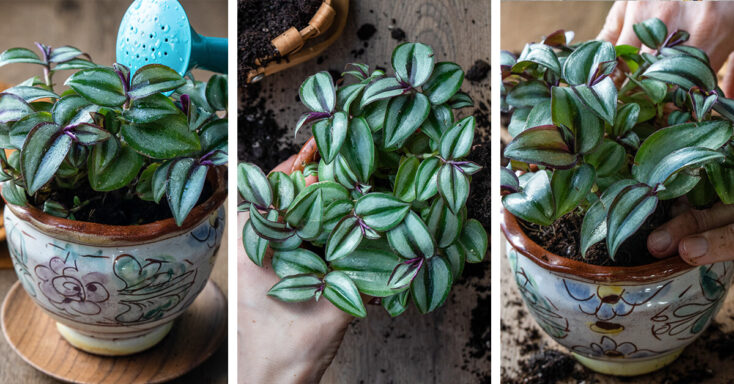
Wandering Jew Plant Care – How to Plant, Grow and Help Them Thrive
Tradescantia zebrina, commonly called the Wandering Jew plant, is a striking houseplant known for its variegated leaves tinted with green, silver, and purple. It originated in Central America and Mexico’s tropical regions. So, the Zebrina is a perfect choice for growing indoors. The good news is that Wandering Jew plant care is not difficult at all!
Key Takeaways
- Zebrina is a low-maintenance, fast-growing plant.
- The Zebra Plant makes an excellent choice for beginner gardeners because care isn’t overly complex.
- This plant quickly fills up empty spaces in your indoor landscaping efforts.
- Pruning is good for Zebrinas. It maintains their shape and keeps them from becoming invasive.
Wondering about the Wandering “Dude”
The Zebrina has numerous nicknames (many from cultivars), including Silver Inch Plant, Striped Trad, Striped Wandering Creeper, Purple Heart Plant, Small Leaf Spiderwort, Moses in the Cradle, and Zebra Plant. Because the name Wandering Jew is offensive to some, gardeners usually use one of these, the botanical name, or the new moniker, Wandering Dude.
The flowing leaves on this plant measure about ½ inch long and about ¼ inch wide. When used outdoors, they make a colorful ground cover. The flowers are pink to purple and bear brownish seeds. Take care when you work with the zebra plant. The sap proves irritating to some people.
Light Play: When Zebrina is in bright light, the colors become even more vibrant. If you have a window location with indirect light, the exposure enhances leaf pigments. It is very visually appealing.
The Basics of Wandering Jew Plant Care (Zebrina)
In taking care of any indoor plant, there are certain important points in your care routine.
- Temperature: Zebrina plants thrive when the temperature is around 70 degrees. Keep the plant away from drafts or air conditioning ducts.
- Light: South or eastern-facing windows work best, provided the light is indirect. If they’re not getting enough sun, they become spindly.
- Water: Keep your inch plant moist. Avoid over-watering or letting the plant’s soil dry out completely.
- Soil: Plant your Wandering Dude in a peat-based potting mix with good drainage.
- Humidity: Good news! The average humidity in your home should work fine.

The Battle of Fronds vs. Flowers: Many people buy houseplants for their flowers. Zebrinas do produce delicate petals, which look charming. However, the true allure of the Wandering Dude is its foliage.
Wandering Jew Plant (Zebrina) Needs
When you’re looking for a beautiful backdrop to your indoor garden efforts, Zebrina fills that need. Mix the type of container you use for greater visual impact. You can take your plants for a summer stroll, but you cannot leave them outdoors during winter.
Except for Purple Queen Zebrina, which loves direct light, the fronds of these plants will burn if left in direct sunlight for too long. If you have a window that gets light in the morning and indirect light later, the Wandering Dude will thrive.
Tip: Turn your pots periodically so all sides of the plant benefit from sunlight.
If you’d like to expand your Zebrina family, propagation is simple. It begins with taking a stem cutting. Look for a healthy stem and snip it below a node. You can then root it in a glass of water or put it directly into the soil. A little rooting compound improves the results from direct soil planting.
Choosing a Wandering Jew Plant for Your Home
Inch Plant (blossfeldiana): Thick, fuzzy leaves with purple undersides. It blossoms in flower clusters of white, rose pink, or blue. Mature height 6-12 inches.
Longpipes (Wild Crocus): These bluish-purple flowers appear from May until June. It’s thin, arching leaves grow up to 7 inches long. If you have a rock feature inside, longpipes will do well there.
Moses-in-a-basket (Oyster Plant; Boat Lily): The dark green leaves are sword-like and grow in a spiral. The undersides of the foliage are purple, and it blossoms with white flowers. Dwarf plants are 6-12 inches tall and require 6-8 hours of indirect light daily. The vibrant purple undersides of this plant’s leaves are truly striking.
There are two popular variants of Moses-in-a-Basket. One is a Tricolor, bearing pink, green, and cream leaves. The other is a Golden Oyster with bright gold-yellow leaves.
Pallida: A native of Mexico, Pallida goes by the name Purple Heart. The foliage is eggplant purple, adorned with light pink flowers bordering on orchid—a good choice for hanging baskets. Grows 1-2 feet tall and wide.
Striped Inch Plant (River Spiderwort, Speedy Henry): Average size is 12” x 12”. The plant’s leaves are dark green, shiny, and pointy (2 inches). Striped inch plants blossom with white flowers.
Virginia Spiderwort: Bright green narrow leaves topped with violet, three-petaled flowers that measure 2” across. Each flower only lives for a day, but there are so many you won’t notice. This is a larger member of the Wandering Jew family, with an adult height of 18-20 inches and a width of 12-18 inches.
White Velvet: Gray-green leaves covered in white hairs distinguish this Wandering Jew from others. It blossoms for about a month in bright pink-purple flowers. Received the Award of Golden Merit from the Royal Horticultural Society. Mature height: 12 inches.
While humans suffer no illness from Zebrina, ingestion by pets can be toxic. Keep this in mind when placing them around your indoor garden.
Wandering Jew Plant Watering Techniques
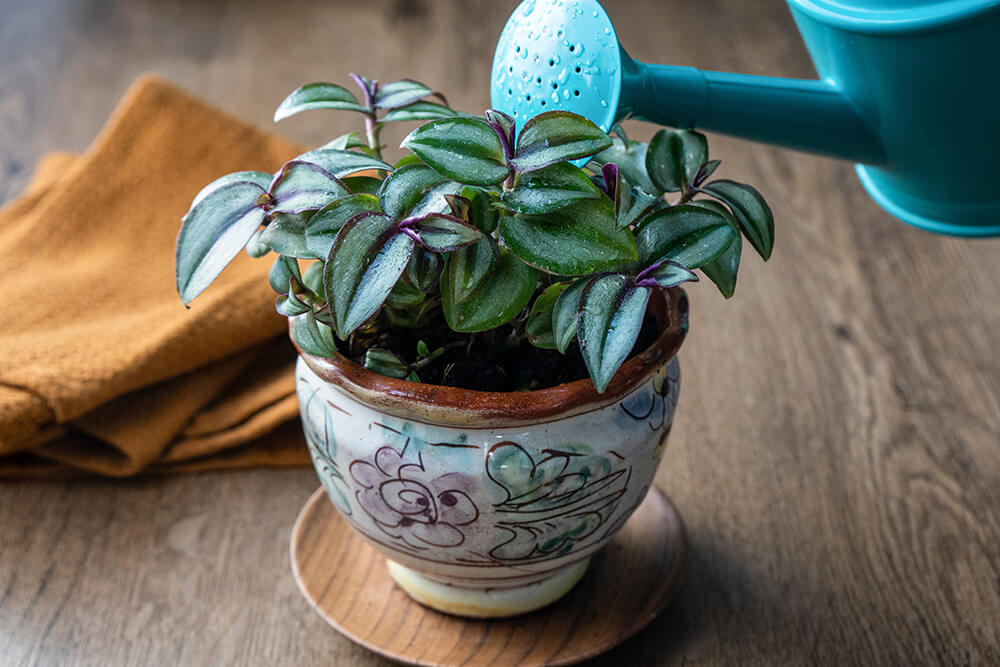
While these plants handle random overwatering, it won’t continue being healthy if left waterlogged too long. When you apply water, do so from the base of the plant. Watch and you can see the water absorption. Alternatively, you can take the plant to your sink and give it a good bottom watering until the liquid comes out of drainage holes. Let it finish in the sink, then put it back in place.
When you walk through your home, regularly check your plant’s soil. Put your finger down to the ½ inch point in the soil. If it’s dry, then water. Because your Wandering Jew may grow at different rates throughout the year, this test alleviates guesswork.
If you are busy and may forget, try an aqua globe.
Vertical Space: If you want a plant to fill some of your vertical space, you’ll be happy to know Zebrina can be trained. By using a support, you can guide it toward climbing. Use a moss pole or trellis as a support system.
Wandering Jew: Potting and Repotting
Tradescantia are fast growers, so you may need to repot it every two or three seasons. When it’s time, you want to give the plant a larger container and fresh soil. Zebrina’s roots will start peeking out of drainage holes to tell you they need more space. Alternatively, they may move up the side of the pot toward the container’s edge.
When you remove the plant from the current container, begin by putting it down on its side. Hold the pot with one hand and the base of the foliage with the other. Gently wiggle (the stems can be quite delicate). Once it slides out, shake off old soil and inspect for signs of disease or pests.
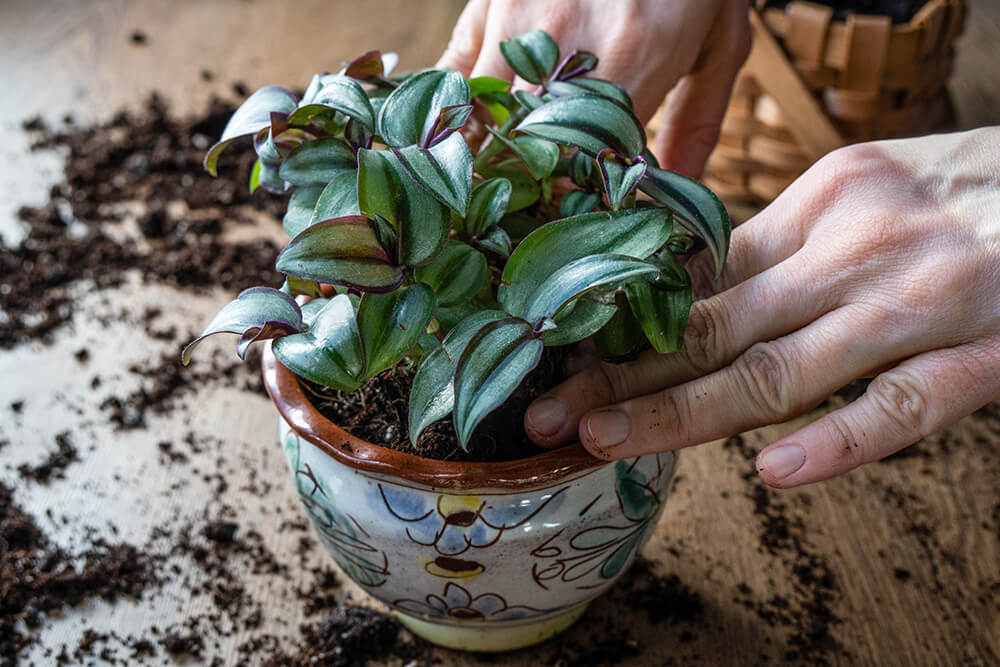
As a generalization, Zebrina represents adaptability, growth, and resilience. Because of its hardy nature, this plant has become a metaphor for overcoming adversity and showing grace during times of transformation. It is an emblem of the human spirit’s perseverance and enduring hope. In literature, the flower appears as a symbol of beauty, strength, faith, and diligence.
Dream books say the Wandering Jew appearing reminds you all is not lost. Stay true, stand tall, and succeed. If you’re holding the flower, it portends luck and prosperity.
Pruning and Maintenance
Because this plant grows quickly, heavy pruning is good for it. Make it an addition to your regular Wandering Jew care routine. Trim off long tendrils, dead leaves, and weak growth. Pinch off new growth and thin it out. This helps create a bushy appearance and transforms the plant into something suitable for your indoor efforts.
Sometimes, per their name, Zebrina goes a-wandering. It becomes leggy stems with few leaves. Keep those trimmed down so the plant can focus its energy more effectively. If you’re plants look rather dull, trimming is the trick for promoting thick leaves.
Perhaps the most important reason for pruning Wandering Jews is to keep them healthy. Removing unhealthy or dead parts deters fungus and disease.
When: Indoor plants often follow nature’s lead, resting during fall and winter. So, give them their haircut in spring or early summer at the latest.
Zebra Plants and Therapeutic Properties: Inch plants have antioxidants and antimicrobial properties. In areas like Jamaica, people treasure them as a treatment for high pressure and cough while applying leaves for swelling. In China, this plant has the name “Water Turtle Grass.” It’s recommended for kidney disorders. Mexicans have an inch plant leaf decoction used as a tonic. Along the same lines, Guyana healers brew the leaves and offer the tea for influenza and digestive issues.
Blooming and Resting Periods
This plant’s flowers benefit from a dormant period the previous winter. Since it’s indoor, you’ll need to put the Zebrina in an area hovering around 60F. Reduce water. You want the soil to dry for two weeks between irrigation. Always use room-temperature water so you don’t shock your plants.
Once the Wandering Jew is growing, you’ll need to water it once a week. Now is the time for fertilization.
There is a legend that surfaced in the 13th century. It says that a Jewish person taunted Jesus on his way to crucifixion. As a result, the person was cursed to walk the earth until the second coming. Another sad account was that of a condemned man separated from his sister by the Bering Straight. He set out to find her, yet wherever he traveled, plagues followed. There is no happy ending here. The fellow never finds his sister.
There is no question that the Wandering Jew is diligent and sometimes invasive, so perhaps some of those characteristics contributed to the plant’s name.
Common Pests & Plant Diseases
Wandering Dudes rarely have pests indoors. Occasionally, you may find aphids or spider mites. You can wash both off the leaves or use a natural insecticide.
When you see small white webs on the undersides of leaves, that’s a spider mite. They like it warm and dry, so amp up the humidity using a household humidifier near the plant. Spray it periodically. Should the critters persist, wash the plant in your sink.
Signs of Aphid infestation include:
- Weakened growth
- Yellowing, twisting, or curling leaves
- Small white flakes on the leaves (this is the result of aphids shedding their exoskeleton)
- A sticky, shiny substance on leaves and stems (honeydew)
- Black, sooty mold (a result of honeydew)
- Diseased plants (aphids carry over 100 different viral diseases that can settle into the Wandering Jew)
Neem oil is a trusted remedy. Apply, then re-apply in a week. Continue more applications until they’re gone.
When it comes to disease, most develop because of over-watering, which leads to root rot. Roots can only retain so much water before they start getting mushy. The good news is you can remedy this easily. Reduce your watering schedule and improve the drainage in the soil. Just add some coarse sand or perlite.
Black patches and white powdery particles on your plant’s leaves reveal fungal issues like leaf spots, botrytis, and powdery mildew. Clean away affected foliage. Make sure your plant isn’t over-watered. If you get stuck and the fungus won’t go away, you should dispose of the Wandering Jew and sterilize the container before reusing it.
In an odd twist, you can grow wandering jew plants in water. You will need to change the water every 4 days and add a little fertilizer (3:1 ratio in freshwater). Using purified water is best. Salt and chlorine can adversely affect these plants. Also, make sure the water is at room temperature. With the right lighting, you can keep Zebrina alive in water for a long time, much like money plants.
Troubleshooting Common Wandering Jew Problems
- Bare stems and spindly growth: Over the years, this is natural. However, in younger plants, it may indicate a lack of light, water, or fertilization.
- Loss of leaf color: When variegated leaves begin turning all green, your plant is getting too much direct sunlight.
- Limp stems: Typically means a lack of water, but could be a sign of insects.
Word Play: The Inch Plant’s name is descriptive to a T. This foliage grows approximately one inch every week! It can also propagate itself using only an inch of stem.
Frequently Asked Questions About Jew plant
Does a wandering jew plant need sun.
Yes, but not direct sun. An area with indirect light is best for these plants. Turn the plant periodically so all sides get filtered light regularly.
How do you care for a wandering Jew indoors?
Now, you may have Wandering Jews that are just indoor plants. But if you have outdoor pines, you; 'll need to bring them into your home before the threat of frost. They’ll do just fine in your household landscape as long as you give them adequate light and proper watering.
How often do you need to water a wandering Jew plant?
If your Wandering Jew develops mushy stems, you’re over-watering it. Don’t automatically bring over the water pail. Check the soil. If it’s dry down to 1”, it’s safe to add moisture. Otherwise, wait.
How long will wandering Jew last?
Wandering Jews are fairly hardy. As long as you care for them correctly, your Tradescantia plants will live for many years.
How big do wandering Jews get?
Much depends on the type. Most plants don’t grow beyond one foot tall but may have longer (2-foot) stems.
Zebrina plants have a rich history and a variety of interesting traits. It thrives in a variety of environments, and has alluring striped leaves, and people enjoy looking at it. When you want to add some living greenery to your indoor garden, Zebrina is one possibility. It’s exotic yet understated, and you will enjoy it for years to come.
- Living Room
- Dining Room
- Laundry Room
Grow. Play. Every Day!

- House & Home
- Houseplants
Wandering Jew Care: How to Grow a Long and Luscious Inch Plant (Tradescantia Zebrina)
Tradescantia zebrina (commonly known as wandering Jew, spiderwort, or inch plant) is popular for a reason: This beginner-friendly houseplant is low-maintenance and grows quickly. It’s also super easy to propagate more plants so you can fill your home with more of the colorful striped foliage the species is known for.
Written by Linda Ly

When it comes to vigorous, colorful, and easy-to-grow hanging houseplants, there aren’t many that can compare to Tradescantia zebrina (known more commonly as wandering Jew—and I’ll touch on the history of that name below). Whether you’re a houseplant beginner or a veteran, most indoor gardeners have owned one of these potted plants at some point.
Keep reading for everything you need to know about Tradescantia zebrina and growing this stunning houseplant in your own home.
Disclosure: If you shop from my article or make a purchase through one of my links, I may receive commissions on some of the products I recommend.

About inch plants
Natural habitat.
Tradescantia zebrina is a native of Central and South America, from Mexico down to Colombia, as well as the Caribbean. Here, it forms part of the undergrowth in lightly forested and often very moist areas. It can form very dense, wide mats thanks to its creeping growth pattern and ability to throw roots extremely quickly.
Unfortunately, its vigorous growth has also made Tradescantia zebrina an invasive plant in some regions. This includes Hawaii, Brazil, and Australia, where the species easily takes hold in moist, forested areas.
As a 2019 study carried out in the Brazilian Atlantic Rainforest notes, this is problematic due to the species choking out native plants.
Some of the above was caused by careless gardeners allowing bits of the plant to get into the wild, where they quickly root. If you’d like to grow spiderworts like this one in your garden, please make sure to dispose properly of any trimmings left after pruning!
This also applies to zebrina’s popular cousins, like Tradescantia fluminensis, T. pallida, and T. spathacea.
Description
It’s not difficult to see why Tradescantia zebrina gained popularity as a houseplant. Wandering spiderwort plants (not to be confused with spider plants , another beginner-friendly species) are low-maintenance and grow just about anywhere—they even just grow in water !
Easy care and quick growth aside, spiderworts are also just good-looking plants. The pointed, oval leaves on thin, fleshy stems overlap slightly and are characterized by their zebra pattern in purple and silvery green. The leaf undersides are deep purple in color and the tiny, three-petaled flowers are bright pink.
Although this species is naturally a creeping plant, it’s often grown indoors in hanging planters. As long as the plant is provided with enough light, the foliage will be very dense and brightly colored, forming a spectacular waterfall that can reach more than 3 feet in length.
What’s in a name? In the case of common houseplants, sometimes a lot.
Tradescantia zebrina is a classic houseplant (I found mention of it in a 1964 German book about houseplants, but it’s probably been around longer than that!) and among most English speakers, it has long been known as wandering Jew. This is probably a reference to the “wandering” nature of the plant, as it does have a creeping growth pattern.
The legend of the wandering Jew is hundreds of years old and is now commonly considered to be rooted in antisemitism. It describes a Jewish man cursed to walk the planet until the Second Coming because he taunted Jesus on his way to the cross.
Because of this, the plant name has partly fallen out of fashion and has been the source of much debate in the plant world over the past few years.
Some plant enthusiasts have embraced the alternative “wandering dude,” which I personally think is a great option.
“Inch plant” (houseplant enthusiasts don’t agree on whether this refers to the fact that it can grow an inch a day, or that you only need an inch of stem to propagate it), “spiderwort,” or “wandering spiderwort” are also popular alternatives, though these are common names for other Tradescantia varieties, such as Tradescantia Nanouk.
The best way to avoid any confusion is to just stick to the scientific name.

Inch plant varieties
There are three subspecies of inch plant (wandering Jew): Tradescantia zebrina var. zebrina, var. flocculosa, and var. mollipila. Unsurprisingly, after it having been a popular houseplant for so many years, nurseries have also managed to create a whole bunch of cultivars through selective cultivation.
A few of the popular Tradescantia zebrina cultivars you may come across in your local plant store include, but are certainly not limited to:
- Tradescantia zebrina ‘Quadricolor’: Yep, as the name suggests, this one adds an extra color to the mix. The leaves are cream, pink-purple, light green, and dark green.
- Tradescantia zebrina ‘Burgundy’: Characterized by its very dark purple coloration.
- Tradescantia zebrina ‘Silver Plus’: Less purple, more shiny silver.
- Tradescantia zebrina ‘Red Gem’: Less silver, more intense (light) purple.
- Tradescantia zebrina ‘Purple Joy’: Less silver, more dark purple.
- Tradescantia zebrina ‘Tikal’: A rare, naturally occurring variety that collectors pay a pretty penny for.
Do keep in mind that most of these cultivars aren’t patented and the amount of mislabeling and variation within a cultivar are both huge. Just growing your wandering Jew in lower-light conditions can completely change the way it looks, so it’s not surprising that confusion sometimes reigns supreme.
Luckily, care is the same across all cultivars, so your best bet is to just enjoy your plant even if you’re not sure what Tradescantia variety you’re dealing with!
Where to buy wandering Jew plants:
- California Tropicals
- Daylily Nursery
- The Green Escape

Caring for an inch plant
Light and temperature.
It’s important to provide your Tradescantia zebrina with enough light. It’s tempting to use plants to brighten up dark, shaded spots in your home, but that just doesn’t work with this one: It loses its dense growth pattern and beautiful coloration in low light.
To prevent your wandering dude plant from growing sparse and green, place it near a window that gets bright indirect light. Some full sun isn’t a problem either, but do make sure you acclimate it gradually to a higher light location.
Temperature-wise, this species is a lot hardier than many of the tender tropicals we like to grow in our homes (like Anthurium andraeanum and Begonia maculata ).
Wandering dude plants can handle a very wide range of temps, making it perfect for those chillier windowsills that your other plants may not appreciate. Room temperature is ideal, but anything between 50°F to 85°F will keep them happy.
Water and humidity
Your Tradescantia zebrina will appreciate lightly moist soil. You can water a bit more during the summer months, when the plant is actively growing and needs a lot of moisture, and less during winter, when soil tends to take significantly longer to dry.
If you’re not sure whether it’s time to water your wandering Jew plant yet, you can always turn to the age-old trick of sticking a finger in the soil.
- If it still feels damp, wait a little longer, until the first inch or two has dried.
- If it feels bone dry, you’ve waited too long; you may also see limp leaves on your plant at this point. It’ll bounce back, but not always without lasting damage.
- If the soil feels wet, you watered too much and need to keep an eye out for root rot.
As for humidity, given its rather wet natural habitat, wandering Jew does appreciate higher air moisture levels. The great thing is, though, that it doesn’t demand it. As long as you keep its soil lightly moist and the air isn’t extremely dry, your plant should do well.
Soil and planting
Wandering Jew is not fussy about its potting mixture at all. I’ve grown it in pure houseplant potting soil with no additives. If you do want to take things to the next level, you can add some perlite and/or peat moss, although this is really not a must.
Most houseplant enthusiasts like to place their wandering Jew in a hanging planter so they can enjoy the look of the leaves cascading down. This is not a must, though. You can also emphasize the species’ creeping growth habit by filling up a large, shallow planter, growing it in a terrarium, or even keeping it in water on a semi-permanent basis.
Recommended products for wandering Jew plant care:
- FoxFarm Ocean Forest Potting Soil
- Espoma Organic Potting Mix
- Perfect Plants Organic Perlite
Fertilizing
Like most other houseplants, Tradescantia zebrina appreciates a bit of fertilizer during the growing season, which extends from spring to early fall. You can use a normal houseplant fertilizer according to the instructions on the bottle.
Don’t fertilize during the winter months unless your plant is growing well. It doesn’t need extra nutrients if it’s inactive.
Recommended fertilizers for wandering Jew plants:
- Houseplant Resource Center Liquid Fertilizer for Houseplants
- Instant Biologics Instant Plant Food (Fizzing Nutrient Tablets)
- Maxsea All-Purpose Seaweed Plant Food
Pruning
There’s a good chance you’ll have to prune your Tradescantia zebrina regularly, because as I mentioned, this is a very quick grower. It also roots very easily, so any trimmings can be replanted! I’ll describe how to do this in the section on propagation below.
Aside from stem trimming, you can remove any dead leaves, which are bound to pop up from time to time in very dense plants like this species.
Dividing or repotting
Inch plants don’t grow by producing plantlets at their base like many other houseplants (such as spider plants ) do. Instead, inch plants spread by rooting along the stems.
This means that division is not really the way to go; keeping these plants manageable is usually done through pruning. You can shape your plant by pinching off any long, leggy stems to create a fuller appearance and control its spread.
You’ll notice that Tradescantia really doesn’t mind being a bit cramped in its planter. Still, it’s a good idea to provide your plant with some fresh soil every year or two by repotting it.

Propagating an inch plant
If you’ve never propagated a houseplant before, this is truly one of the best species to start with. It’s known for rooting extremely quickly in both water and soil, meaning it’s easy to fill endless planters to keep or give away.
All you need to propagate your Tradescantia zebrina is a pair of clean scissors. Here’s how you do it:
- Snip the ends off existing branches. An inch or two with a few leaves works best.
- Remove the leaves at the bottom so part of the stem is exposed.
- Place the cutting in a glass of water to root or plant it directly in soil. You can put cuttings back in the mother plant’s pot to give her a fuller appearance on top.
- It can take a little longer during the winter months, but the first roots should appear within a week or so. You can give soil cuttings a slight tug to verify they’ve rooted.
- Once the first signs of new foliage appear, you’ll know your propagation attempt has been a success!
- If you propagated in water, you can leave the rooted cuttings in water almost indefinitely, although you can also pot them up in fresh soil.

Common questions about inch plant care
How do i make a wandering jew plant bushy.
By their very nature, wandering Jew plants are not bushy. Their creeping growth habit means they naturally grow leggy over time, especially in containers.
However, you can mimic a fuller appearance by strategically pinching off any long, spindly stems to shape the plant more. These stems can also be replanted near the mother plant.
As the baby plants grow, they’ll help fill in sparse areas and create the illusion of a bushy wandering Jew.
How long do wandering Jew plants live?
Wandering Jew plants have a limited lifespan of just a few years, and as a potted plant, you’ll notice your wandering Jew becoming very leggy after just two to three years.
Unlike other fast-growing plants that benefit from pruning, cutting back a wandering Jew doesn’t work well to renew its growth; it simply controls the spread.
The best way to keep your plant coming back year after year is to propagate new plants from stem cuttings, which—fortunately—is super easy with a high success rate.
Is wandering Jew perennial?
Wandering Jew (Tradescantia zebrina) is a trailing evergreen perennial in its native habitat (USDA hardiness zones 9 through 12). Where it’s not winter hardy, wandering Jew is grown year-round as a houseplant.
Are wandering Jew plants toxic to cats and dogs?
Wandering Jew is not considered outright toxic, but it can cause some skin irritation. If your pet gets into your plant, don’t worry too much, although it can be a good idea to have a look in its mouth to make sure there’s no excessive swelling. Be sure to offer water. To prevent skin rash, it can be a good idea to wear gloves if you need to handle your wandering Jew plant. This especially applies if you have sensitive skin.
https://www.cabi.org/isc/datasheet/110354
Racism in Taxonomy: What’s in a Name?
Chiba de Castro, W. A., Xavier, R. O., Garrido, F. H., Romero, J. H., Peres, C. K., & da Luz, R. C. (2019). Fraying around the edges: negative effects of the invasive Tradescantia zebrina Hort. ex Bosse (Commelinaceae) on tree regeneration in the Atlantic Forest under different competitive and environmental conditions. Journal of Plant Ecology, 12(4), 713-721.
Encke, F. (1964). Pflanzen fur Zimmer und Balkon; Auswahl, Pflege, Vermehrung.
I'm a plant lover, passionate road-tripper, and cookbook author whose expert advice and bestselling books have been featured in Time, Outside, HGTV, and Food & Wine. The National Parks Cookbook is my latest book. Garden Betty is where I write about modern homesteading, farm-to-table cooking, and outdoor adventuring—all that encompass a life well-lived outdoors. After all, the secret to a good life is... Read more »
We bought a full grown Bolivian Jewel mid summer last year. It was in a 14” raised pot and flowing 2 foot over the sides. It was beautiful next to our fountain outside. We live in Minnesota so we had to discard it in the late fall since we had no place to care for it in the house. Since we can’t find another like it we’d like to plant one from scratch but how. We still have the pot and riser but have no idea how to start from that. One plant, a few or just how many to make a bushy over grown plant so it looks like the one we purchased last year. Does this make sense or should we just forget it since it is already the middle of May. The greenhouse that we bought it from last summer doesn’t have any this year, just small ones in 4” pots. Thanks
If you can only grow it as an annual (and won’t be overwintering it indoors), you can plant a few smaller ones together to make them look fuller as they grow.
It seems counterproductive to talk about the problematic origin of the name wandering Jew, recommend multiple alternative names (including scientific), but then continue to call it wandering Jew in the rest of the article. If the name is anti-Semitic just set a good example and use a different name.
Leave a Reply Cancel reply
Your email address will not be published. All fields are required.
Save my name and email in this browser for the next time I comment.
This site uses Akismet to reduce spam. Learn how your comment data is processed .
Recommended Reads
- Garden of eatin’

The No-Dig Garden Method: Make Amazing Soil With Less Work

Solarizing Your Garden: How to Use the Sun to Control Weeds and Pests in the Soil


How to Plant a Three Sisters Garden: The Original Companion Plants

How Much to Plant for a Year’s Worth of Food

What You Should Know Before Buying Land (My Real-Life Tips)

Construction Loans: What I Wish I’d Known As a First-Time Borrower

Dark Room? 9 Actually Low-Light Plants That Don’t Need a Lot of Sun

Getting Rid of Fungus Gnats: 11 Remedies That Really Work

My Favorite Ruby Red Sauerkraut Recipe (and Why It’s So Good For You)

How to Make Nukadoko (Fermented Rice Bran Bed) for Pickling

Easy 4-Ingredient Colorful Homemade Pasta—No Pasta Maker Needed

The Best Homemade Limoncello
Want to level up your garden this year.
Sign up for my free, never-boring newsletter and every week you’ll get the game-changing emails you wish you would’ve had sooner.
- About Linda Ly
- What’s In My Garden
- Lazy Gardening Academy
- Sponsorships
- Site Policies

Back to the top
Disclosure: Garden Betty independently selects products to feature on this site. I may receive a commission when you buy something through one of my links. As an Amazon Associate, I earn from qualifying purchases.
© 2024 Garden Betty. All Rights Reserved.


Wandering Jew Plant (Tradescantia zebrina): Types, How to Grow and Care
Sharing is caring!
Plants with trailing and creeping habits are some of the best plants to keep. They are fast-growing and make thick carpet of groundcovers for gardens in no time and they also create striking hanging indoor plants.
Among the all-time best trailers to grow is the wandering jew. Easy to maintain and drapes beautifully, this colored plant will make any space more inviting and interesting.
Medicinal Properties
Propagation and maintenance, what is a wandering jew plant.
Tradescantia is one of the 37 genera under the plant family Commelinaceae (1). Some of its 75 species are commonly called ‘wandering jew’ (also known as inch plant), a name they adapted due to their long lifespan like the Jewish character from a Christian folklore.
Another name for this group of herbaceous perennial plants is ‘spiderwort’ after the spiderweb-like sap they produce when the stem breaks. They are native to Canada, Mexico, and Argentina and have been naturalized in other parts of the world (2).
The most common tradescantia grown ornamentally is the T. zebrina also previously called Zebrina pendula . It has long fleshy stems where the wandering jew plant leaves and roots appear. The lance-like leaves are a mixture of green and purple with silver stripes on the upper side and deep purple under (3). The plant grows close to the ground and can only reach 20 to 30 cm high.
Does Tradescantia Zebrina Flower?
The wandering jew is considered an ornamental plant primarily because of its showy colorful foliage but the plant does produce pink flowers.
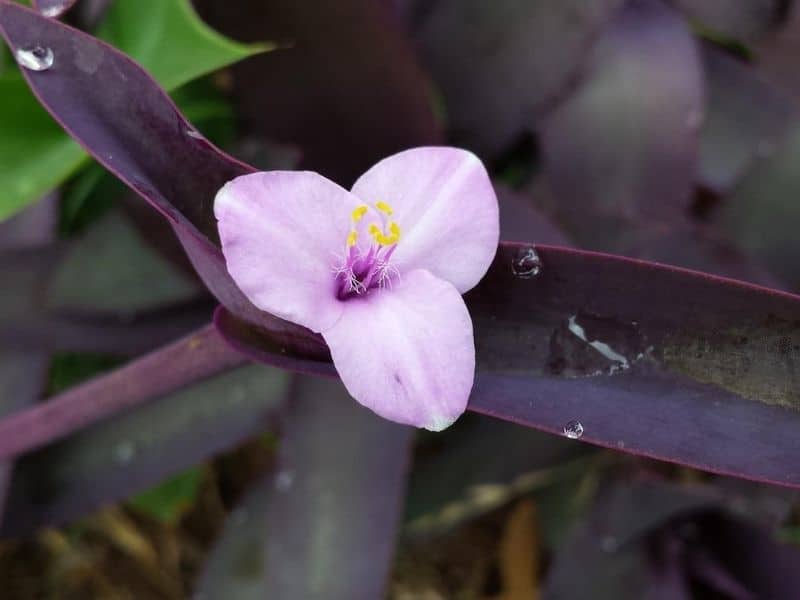
Small three-petaled pinkish purple flowers appear sporadically throughout the year (4). The resulting fruit is a capsule containing tiny brown seeds.
Is it Toxic to Pets?
Spiderworts are normally harmless plants but they contain toxic properties that may cause mild gastric problems and dermatitis to pets. Although they don’t lead to anything serious, it will be safe to keep the plants out of reach of pets and to keep the hands protected when dealing with the sap of the plant.
Because of the plant’s hardiness and adaptability to different environments, the wandering jew establishes well, in fact so well that it can be considered an invasive species. In countries like Australia, the plant has the capacity to invade natural vegetation. Although growing them is not prohibited, everyone is obliged to keep the plant’s growth under control (5).
Studies showed that Tradescantia has significant effects as an anticancer, antioxidant, and antibacterial medicinal plant. In traditional Chinese medicine, the wandering jew plant is highly valued as treatment for kidney failure.
The extract from the whole plant is cooked with dates, ginger, and water and consumed by patients. The plant is also known to treat high blood pressure, cough, urinary tract infection and tuberculosis (1).
How to Grow and Care for a Tradescantia
Here’s how to care for a wandering jew plant, one of the easy house plants to own.
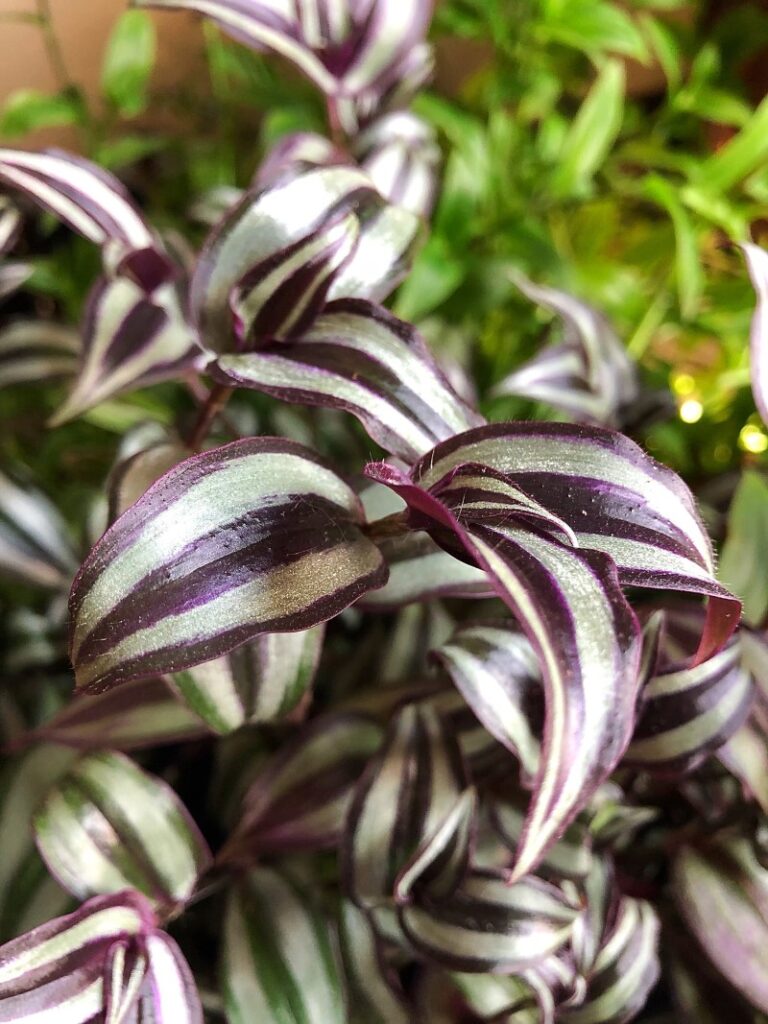
Light and Water
In the wild, the wandering jew plant thrives without assistance but under the right conditions. It likes filtered sun so indoor fluorescent light is enough. Placing them by the window and turning the plant every two weeks will keep the leaves colorful and the growth even on all sides (3).
The plant spreads easily in damp areas that’s why it naturally grows along riverbanks and roadsides. When potted, the soil should be kept moist but well-drained. Saturated soil often causes root rot.
Fertilize your Tradescantia plant once a month during the growing season (spring and summer) with a balanced, water-soluble fertilizer diluted to half strength. Avoid fertilizing in fall and winter when the plant is dormant. Over-fertilizing can lead to fertilizer burn and damage the plant, so follow the instructions on the fertilizer package carefully.
Temperature and Humidity
Spiderworts like it warm but there should be enough air circulation or else the leaves will sag. During the heat of the summer, taking the plant outside under shade will provide the necessary cool to the plant.
Mist the hanging plant early in the morning and late in the afternoon. If the plant is on a table, place a glass of water beneath the leaves or put the pot on a wet pebble tray. This will humidify the immediate vicinity of the plant aiding in its photosynthesis and transpiration processes.
Pests and Diseases
The most common living enemies of the wandering jew are aphids, mealybugs, scale, white flies, and spider mites. Manual removal at the onset of infestation is effective but they should be closely monitored as serious attack may lead to the plant’s death. If left unnoticed and the infestation has become severe, get rid of the plant by burning to avoid contamination.
Since the creeping inch plant is mainly soft almost like a succulent, soggy soil and too wet conditions lead to root and stem rot (4). As long as the plant is receiving just enough moisture, this disease will be avoided.
Propagating wandering jew plants is very easy. They can grow from seeds but will take years to establish so the more convenient stem cutting is best. The trailing or creeping stems form nodules where the roots will eventually grow as it comes in contact with the potting soil (2). When the hanging plant has longer trails than intended, it can be trimmed and the resulting stem cuttings can be rooted to form new plants.
There will be times that the potted wandering jew will become leggy, especially if it’s been receiving more shade. To promote a bushier growth pinch back by literally pinching the tip of the plant where the new growth occurs (4). This practice allows the formation of lateral stems.
In two or three years, these hardy plants may become pot bound, with the roots taking up most of the space in the pot. Repot in a larger container with a good mixture of soil, coarse sand, and compost to replenish the nutrients and provide room for the roots to breathe. Additionally, fertilize once every two months by foliar application just to improve plant vigor.
Common Varieties of Wandering Jew
The oldest and most common indoor wandering jew, this species has leaves alternating, often overlapping when young, purple leaves with silvery green thick stripes and solid purple underside. The stem is also a mixture of purple and green.
T. blossfeldiana
The leaves of this species are quite thicker, glossy, and covered in miniscule hairs called trichomes. The three-petalled flower is an ombre of white and pinkish purple with yellow anthers.
T. fluminensis ‘Tricolor’
This attractive variety showcases leaves with white, lilac, and green variegation. It appears smaller than the common wandering jew but bushier in form.
T. sillamontana
This whimsical species looks frosted with its silvery trichomes covering the entire plant. The green leaves are still alternately arranged but more compact which make a potted plant look more bushy than trailing. The light color of the leaves provide a complementing backdrop to the bright purple flowers.
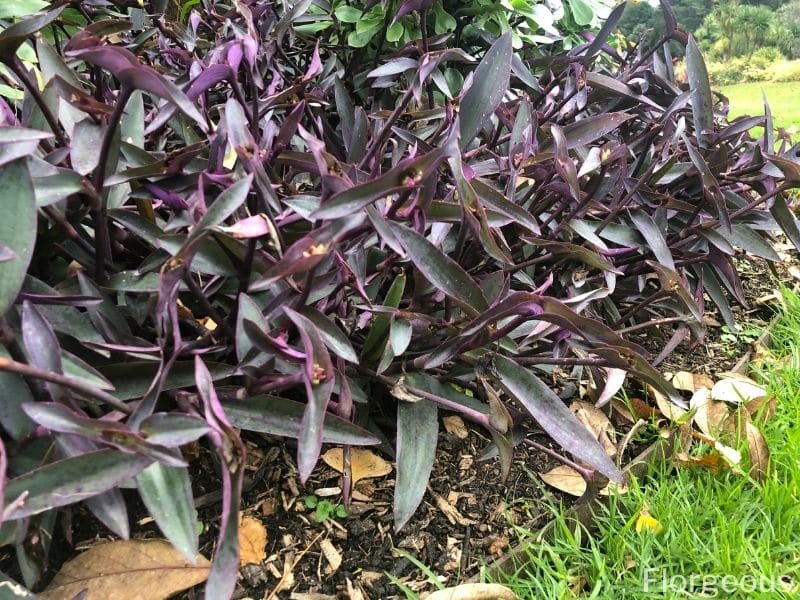
The leaves and stems of this species are in striking deep purple color hence the common name ‘ purple heart ’. Under shaded, they turn a hint of dull green. The leaves are also longer and have wider space in between.
Does Wandering Jew plant need full sun?
Wandering Jew plants (Tradescantia zebrina) prefer bright indirect light but can tolerate some direct sun, especially in the morning or late afternoon. However, prolonged exposure to intense sunlight may cause their dark green leaves to scorch.
How do you care for a wandering Jew plant indoors?
To care for a Wandering Jew plant indoors, place it in a location with bright, indirect sunlight, such as near a window. Water it when the top inch of soil feels dry, typically every 1-2 weeks, and provide well-draining soil. Additionally, mist the plant occasionally to increase humidity and remove dust from the leaves.
How do I make my Wandering Jew fuller?
To make your Wandering Jew plant fuller, prune it regularly to encourage branching and bushier growth. Pinch off the tips of the stems or trim back leggy growth to promote new growth and create a more compact appearance. You can also propagate wandering jew cuttings to create new plants and fill out the pot.
How long do Wandering Jew plants live?
Wandering Jew plants are generally long-lived when provided with proper care. With the right growing conditions indoors, they can thrive for several years, often becoming fuller and more lush over time with regular pruning and maintenance.
Reference List
(1) Dash, G., et. al. Tradescantia zebrina: A Promising Medicinal Plant. 2017. IAJPS, 4 (10). P. 3498-3502 .
(2) Arakelyan, H. Tradescantia zebrina- Mother Nature Healing. 2019. Researchgate.
(3) Vermeulen, N. Encyclopedia of House Plants. Taylor and Francis. 1999. P. 320.
(4) North Carolina State Extension. Tradescantia zebrina. NC State University. 2018. https://plants.ces.ncsu.edu/plants/tradescantia-zebrina/ . Accessed on 12 August 2020.
(5) The State of Queensland. IPA-Zebrina. Department of Agriculture and Fisheries. 2020. https://www.daf.qld.gov.au/__data/assets/pdf_file/0020/51284/IPA-Zebrina-PP102.pdf . Accesed on 12 August 2020.
Photo by Wirestock/depositphotos
Have you seen these?

5 Best Coneflower Companion Plants and The Worst to Avoid
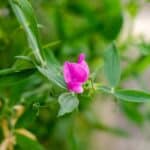
Enhance Blooms & Soil Health: Top 12 Companions for Sweet Peas
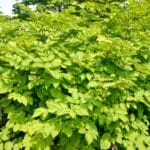
6 Best Aralia Sun King Companion Plants and Landscaping Ideas
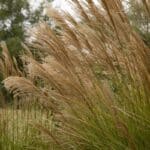
Growing and Caring for Maiden Grass (Miscanthus sinensis)

How to Grow and Care for Fountain Grass (Pennisetum)
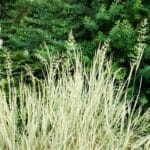
Growing and Caring for Blue Oat Grass (Helictotrichon sempervirens)
About the author.

Wandering Jew Plant
Table of Contents
A Wandering Jew plant, Tradescantia , is a fast growing, easy to care for plant that looks beautiful hanging in front of a window that gets bright, indirect light but no direct sun. Popular nicknames are “Inch Plant” or Spiderwort. Originally found growing as a 1-2ft tall wildflower in Canada and all the way south to Argentina, today a wandering jew plant is both a popular indoor and outdoor plant throughout the world.
Description
The wandering jew plant group is made up of several different varieties. Most have long vines of 2″-4″ oval or heart shaped leaves. Leaf color depends upon the exact type and can be solid green, green with a purple stripe, green with a white or yellow stripe, green with splashes of pink, purple, and cream, or solid purple. The back of the leaf may also be purple. Some wandering jew plants have hairy leaves and some with a silver shine to them. The wandering jew plant produces small flowers in white, pink, purple, or magenta.
Wandering Jew Plant Varieties
The five varieties most commonly used as indoor plants are the Tradescantia zebrina, Tradescantia fluminensis, Tradescantia sillamontana, Tradesantia pallida, and the Tradescantia blossfeldiana.. All types of Wandering Jew plants are easily propagated using stem tip cuttings.
- The Zebrina variety of the Wandering Jew plant has long vines covered in small, stemless leaves about 2” in length. The colorful patterned leaves, green with purple stripes, have a silver shine. The underside of the leaf is a deep purple or magenta color. A Wandering Jew zebrina produces small pink to purple flowers.
- The basic Fluminensis Wandering Jew plant has long stems of small, shiny, oval, dark green leaves with fleshy stems and produces triangular, white flowers. The more popular variegated fluminensis has cream colored or yellow stripes on the leaves.
- The Sillamontana Wandering Jew plant has a different growth pattern and leaf than other members of the tradescantia family. This is not a vining plant. All the leaves, which are covered in white hair, come off a single, thick stem. Magenta flowers develop at the ends of the stems.
- The Palida Wandering Jew plant (Purple Heart Wandering Jew plant) has deep purple leaves with white, purple, or pink flowers.
- The Blossfeldiana Wandering Jew plant has vibrantly colored, fuzzy, green leaves with splashes of pink, purple, and cream and produces clusters of white flowers.

T. Zebrina T. Sitara Gold T. Palida T. Blossfeldiana
Quick Care Tips
Bright light essential for colorful leaves
Reduce water in winter
Repot in the spring if necessary
Avoid temperatures below 45°F ( 7.4°C)
Propagate using stem cuttings
Prune aggressively to keep plant bushy
Wandering Jew Problems
Brown leaf tips: air too dry or spider mites
Limp stems and yellow leaves: plant needs more water
Variegated varieties turn solid green: plant need more light
The sap of a wandering jew plant is slightly toxic to small children, cats, dogs, and other pets.
Read more about common houseplants that are poisonous in my book Don’t Feed Me to Your Cat: A Guide to Poisonous Houseplants.
How much light does a Wandering Jew plant need: Bright indirect light helps the plant produce colorful leaves and flowers. Direct sun causes the color in the leaves to fade.
How to water a Wandering Jew plant: Water well and then allow the top 2″ to 3″ of soil dry out before watering again. If the soil is very dry and the plant is sitting in bright light, the leaves become stunted and lose color. Lack of water can also cause brown and crispy leaves on a Wandering Jew plant. This usually problem affects to older growth first. Over watering is more serious, resulting in root rot.
Feed monthly when a Wandering Jew plant is producing new growth with a water-soluble houseplant food diluted to 1/2 the recommended strength. How to fertilize a Wandering Jew plant: Using a plant food high in nitrogen helps the plant produce more colorful leaves. Over-fertilizing causes the bright colors in the leaves to fade.
Temperature
Best temperature for a Wandering Jew plant: Try to maintain temperatures between 60°- 80°F (15.6°- 26.7°C).
Does a Wandering Jew plant need high humidity: Average to high household humidity is best. If the air is too dry, the leaves of a Wandering Jew plant turn brown. Place a Wandering Jew plant on a tray of wet pebbles to increase the humidity; be sure the plant is sitting on the pebbles and not in the water.
Does a Wandering Jew plant flower: In ideal growing conditions, the plant produces small white, pink, or purple flowers.
Wandering Jew plant pests: Although these plants are fairly pest resistant, aphids, scale, and mealy bugs can be a problem. See pictures of these plant pests and learn how to get rid of them in Glossary of the website.
Wandering Jew plant diseases: The high humidity that helps the plant grow better also encourages fungal and bacterial idiseases
Best soil to use for a Wandering Jew plant: Use a well- aerated soil that drains quickly. If the soil seems heavy and clay-like, add some peat moss and perlite.
What size pot for a Wandering Jew plant: This is a fast growing plant so check the root-ball frequently to see if a larger pot is needed. Repot, when necessary, in the spring. Use the next size pot, nothing larger, and be sure there are drip holes in the bottom.
How to prune a Wandering jew plant: When the stems get very long and leggy as the plant matures, don’t hesitate to aggressively prune the plant. When pruning, make the cut above a leaf node (the place where a leaf is attached to the stem). It may take a while for the trimmed stems to bush out , so be patient. You can use the stem clippings to propagate new plants.
Propagation
How to propagate a Wandering Jew plant: Very easy to do, take stem cuttings in the spring, summer,or fall. You can read more about how to propagate a plant using plant cuttings in the Glossary of the website.
Poisonous Plant Info
A Wandering Jew plant is slightly poisonous with a Level #1 toxicity. It is toxic to dogs, cats, and small children. The sap of the plant is caustic and may cause skin irritations or a rash. It is, however, considered safe to put into bird or reptile enclosures.
If a Wandering Jew plant gets a few hours of direct sun every day, the color in the leaves fades. I’d recommend moving your plant to a different area where it will get bright indirect light .
You probably waited a little too long before pruning your Wandering Jew plant so that’s why it’s still not doing well. Unlike most houseplants, Wandering Jew plants take a long time before starting to produce new leaves. Place your plant in bright indirect light and be patient. You can always use some of the Stem Cuttings to start some new plants.
You are killing your Wandering Jew plant with kindness. A Wandering Jew plant gets brown leaves and mushy stems when it is over-watered and over-fed. This plant needs water when the top few inches of soil are dry. Over- feeding is worse than no food at all. Fertilize monthly with a water soluble plant food diluted to 1/2 the recommended strength. Feed only when the plant is producing new leaves. For now, cut off all of the brown leaves and soggy stems and replace the soggy soil with new, fresh, well-aerated soil. Place your Wandering Jew plant in a warm bright area, water carefully, and do not fertilize for at least two months.
Little Household Additions For Long-Lasting Happiness
- Cookware & Bakeware
- Food Storage Solutions
- Kitchen Furniture & Decor
- Kitchen Gadgets & Utensils
- Kitchen Renovation Ideas
- Small Kitchen Appliances
- Bathroom Accessories
- Bathroom Fixtures
- Bathroom Furniture
- Bedroom Furniture
- Kitchen Furniture
- Living Room Furniture
- Office Furniture
- Outdoor Furniture
- Interior Design Trends
- Space-Saving Solutions
- Garden Tools & Equipment
- Home DIY & Maintenance
- Landscaping Ideas
- Outdoor Entertaining
- Outdoor Lighting
- Outdoor Recreation & Activities
- Outdoor Structures
- Patio & Deck Designs
- Pet & Wildlife Care
- Plant Care & Gardening Tips
- Pool & Spa Care
- Seasonal & Event Decor
- Energy-Efficient Appliances
- Home Entertainment Systems
- Home Office Tech
- Latest Tech Trends in Home Improvement
- Security & Surveillance
- Smart Home Devices
- DIY Projects & Ideas
- Flooring & Tiling
- Home Renovation Guides
- Painting & Decorating
- Plumbing & Electrical
- Tools & Equipment
- Appliance Maintenance & Repair
- Bathroom Appliances
- Cleaning Appliances
- Heating & Cooling
- Home Automation Appliances
- Kitchen Appliances
- Laundry Appliances
- Lighting Appliances
- Other Appliances
- Air Quality & Filtration
- Ergonomic Home Solutions
- Family & Pet-Friendly Home Design
- Healthy Home Cooking
- Home Fitness Equipment
- Mindfulness & Relaxation Spaces
- Building Materials
- Construction Techniques
- Electrical and Plumbing Systems
- Hand & Power Tools
- Professional Contractor Advice
- Safety Gear & Equipment
- Worksite Management
- Energy-Saving Tips
- Home Insulation & Ventilation
- Solar Power Solutions
- Child & Elderly Safety at Home
- Emergency Preparedness
- Home Maintenance Checklists
- Pest Control Solutions
- Safety Equipment & Products
- Seasonal Home Care
- Budgeting & Planning Guides
- Buying Guides
- How-To Guides
- Maintenance & Care Guides
- Product Reviews
- Style & Inspiration Guides
- Bathroom Storage Ideas
- Closet & Wardrobe Organization
- Decluttering Tips & Tricks
- Garage Storage Solutions
- Kitchen Organizing Tools
- Living Room Organization
- Office & Desk Organizers
- Eco-Friendly Products
- Home Hacks & Tips
- Personalized Home Decor
- Seasonal & Holiday Decor
- Specialized Home Improvement Topics
- Unique Home Solutions
- How to Store
Home > Garden Essentials > How To Plant Purple Heart Wandering Jew Ground Cover
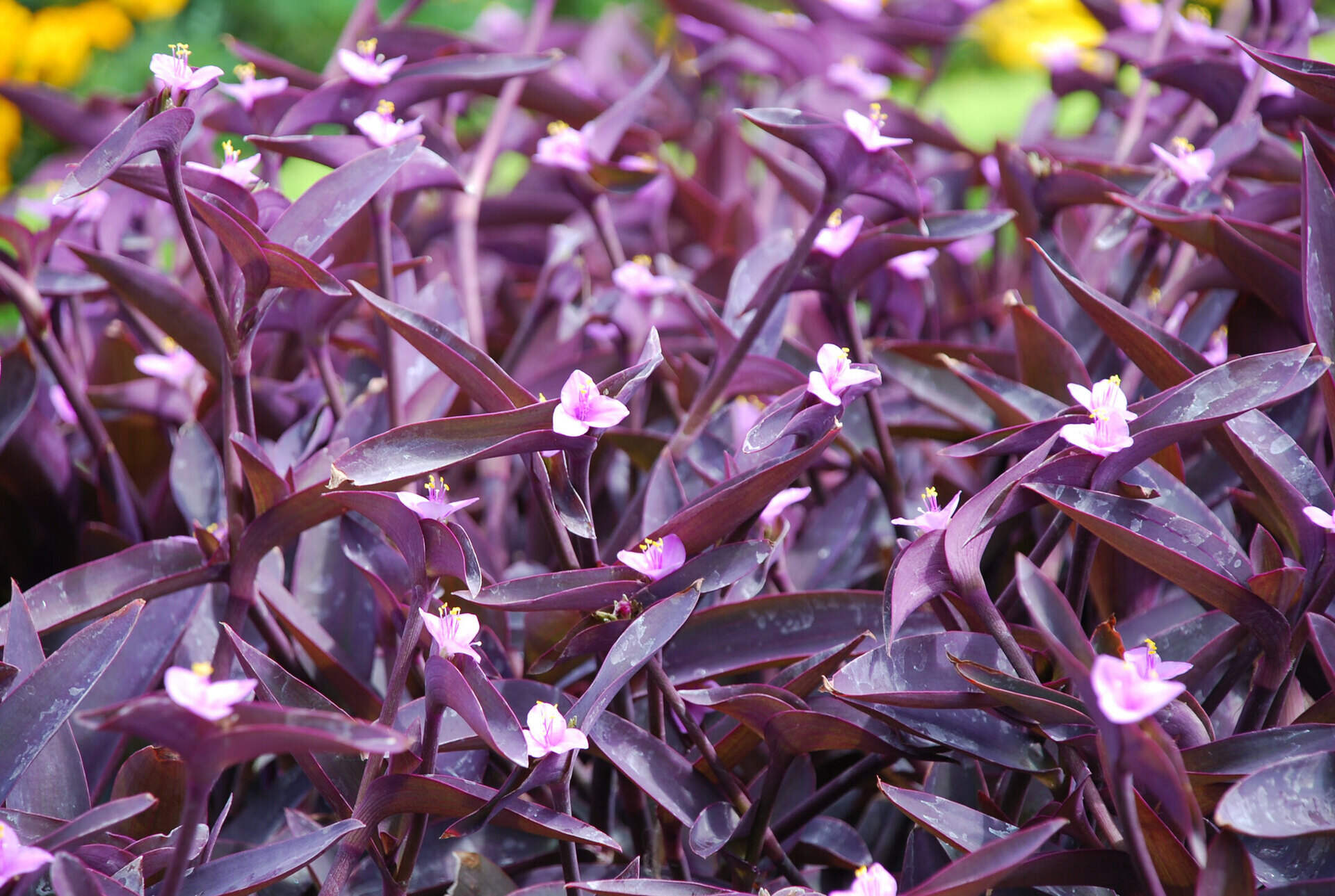
- Garden Essentials
How To Plant Purple Heart Wandering Jew Ground Cover
Modified: March 7, 2024
Written by: Sophia Turner
Learn how to plant purple heart wandering jew ground cover in your garden and enjoy the vibrant purple foliage as it spreads across your landscape.
- Gardening & Outdoor
- Artificial Grass
(Many of the links in this article redirect to a specific reviewed product. Your purchase of these products through affiliate links helps to generate commission for Storables.com, at no extra cost. Learn more )
- Introduction
Welcome to the world of gardening! If you are looking for a beautiful and versatile ground cover for your garden, then look no further than the Purple Heart Wandering Jew (Tradescantia pallida). With its vibrant purple foliage and low maintenance requirements, this plant is a great choice for adding color and texture to your outdoor spaces.
The Purple Heart Wandering Jew, also known as Purple Queen or Purple Heart Plant, is a perennial plant native to Mexico. It belongs to the Commelinaceae family and is highly valued for its ability to spread and fill in empty spaces in your garden. Whether you want to cover a large area or create a stunning border, this plant can meet your needs.
In addition to its visual appeal, the Purple Heart Wandering Jew is an easy plant to grow, making it suitable for gardeners of all skill levels. It can adapt to various soil conditions and is drought-resistant, making it a great choice for areas with limited water availability.
This article will guide you through the process of planting and caring for Purple Heart Wandering Jew ground cover. So, grab your gardening gloves, and let’s get started on creating a stunning and vibrant garden!
Key Takeaways:
- Embrace the vibrant Purple Heart Wandering Jew ground cover for a low-maintenance, colorful garden addition. Choose the right location, prepare the soil, and provide regular care for a thriving and visually appealing outdoor space.
- With proper planting and maintenance, the Purple Heart Wandering Jew ground cover will flourish, adding beauty and color to your garden. Enjoy the stunning display of purple foliage and create a vibrant, inviting outdoor space.
Read more : What Is The Purple Ground Cover Called
- Step 1: Choosing the Right Location
Choosing the right location for your Purple Heart Wandering Jew is essential to ensure its growth and vitality. Here are a few factors to consider when selecting the perfect spot:
- Sunlight: The Purple Heart Wandering Jew thrives in full sun to partial shade. Ideally, it should receive at least 4-6 hours of sunlight per day to maintain its vibrant purple color. However, it can tolerate some shade, making it a versatile choice for different areas of your garden.
- Soil: This plant prefers well-draining soil. The soil should be rich in organic matter and have a pH level between 6.0 and 7.0. If your soil is heavy or clay-like, consider adding compost or sand to improve drainage.
- Climate: Purple Heart Wandering Jew is best suited for USDA hardiness zones 9-11. It thrives in warm climates, but it can also tolerate cooler temperatures as long as it is protected from frost.
- Companion Plants: Consider the plants that will be surrounding your Purple Heart Wandering Jew. It pairs well with other low-growing, drought-tolerant plants such as lantana, sedum, or coneflowers, creating a visually appealing and cohesive garden design.
Keep in mind that the Purple Heart Wandering Jew is a spreading plant, so make sure to choose a location where it has plenty of space to grow and fill in the area.
Now that you have found the perfect location, it’s time to prepare the soil for your Purple Heart Wandering Jew ground cover.
- Step 2: Preparing the Soil
Before planting your Purple Heart Wandering Jew, it’s important to prepare the soil to create the optimal growing conditions for the plant. Here are the steps to follow:
- Remove Weeds and Debris: Begin by clearing the area of any weeds, rocks, or other debris that may hinder the growth of your Purple Heart Wandering Jew. This will create a clean and fertile space for the plant to thrive.
- Loosen the Soil: Use a garden fork or a tiller to loosen the soil to a depth of approximately 6-8 inches. This will help improve soil aeration and drainage, both crucial for the health of your Purple Heart Wandering Jew.
- Add Organic Matter: Incorporate organic matter such as compost or well-rotted manure into the soil. This will enrich the soil and provide essential nutrients for the plant’s growth. Aim to add a 2-3 inch layer of organic matter and mix it thoroughly with the loosened soil.
- Level the Soil: Smooth out the soil surface to create an even and flat planting area. You can use a rake or the back of a garden shovel to achieve a level surface.
By preparing the soil beforehand, you are setting the stage for healthy and vigorous growth of your Purple Heart Wandering Jew ground cover. Now that the soil is ready, it’s time to move on to the next step: planting!
- Step 3: Planting the Purple Heart Wandering Jew
Now that you have prepared the soil, it’s time to plant your Purple Heart Wandering Jew ground cover. Follow these steps for successful planting:
- Digging Holes: Dig holes that are slightly larger than the root ball of each plant. Make sure to space the holes 12-18 inches apart to allow the Purple Heart Wandering Jew to spread and fill in the area effectively.
- Planting Depth: Place the root ball of each plant into the hole, ensuring that the top of the root ball is level with the soil surface. Gently fill the hole with soil, pressing it down slightly to secure the plant in place.
- Watering: After planting, thoroughly water the newly planted Purple Heart Wandering Jew ground cover. This will help settle the soil and ensure that the plant’s roots make good contact with the surrounding soil.
- Mulching: Apply a layer of organic mulch, such as wood chips or straw, around the plants. Mulching helps conserve moisture, suppress weeds, and maintain a more consistent soil temperature. Aim for a 2-3 inch layer of mulch, but keep it away from direct contact with the plant’s stems.
Remember to water your Purple Heart Wandering Jew regularly, especially during dry spells, to keep the soil consistently moist. However, be careful not to overwater, as this can lead to root rot.
Now that your Purple Heart Wandering Jew is planted, it’s time to move on to the next step: watering and mulching.
Plant purple heart wandering jew in well-draining soil in a sunny or partially shaded area. Water regularly to keep the soil moist but not waterlogged. Mulch around the plants to help retain moisture and control weeds.
- Step 4: Watering and Mulching
Proper watering and mulching are crucial for the health and vitality of your Purple Heart Wandering Jew ground cover. Follow these guidelines to ensure the plant receives adequate moisture and benefits from the advantages of mulching:
- Watering: Purple Heart Wandering Jew requires regular watering, especially during the initial establishment period. Keep the soil consistently moist but avoid overwatering, as this can lead to root rot. Check the soil moisture regularly by sticking your finger into the soil. If it feels dry about an inch below the surface, it’s time to water.
- Deep Watering: When watering, aim to provide a deep soak rather than a shallow sprinkle. This encourages the plant’s roots to grow deeply, helping it withstand periods of drought. Water at the base of the plant, avoiding wetting the foliage, as this can lead to fungal diseases.
- Mulching: Apply a layer of organic mulch around the base of your Purple Heart Wandering Jew. Mulching helps retain moisture in the soil, suppresses weed growth, and regulates soil temperature. Aim for a 2-3 inch layer of mulch, making sure to leave space between the mulch and the plant’s stems to prevent rot.
- Mulch Maintenance: Regularly inspect and replenish the mulch layer as needed. Over time, the mulch may decompose or thin out, reducing its effectiveness. By maintaining a consistent layer of mulch, you can optimize its benefits for your Purple Heart Wandering Jew.
In addition to regular watering and mulching, be mindful of the weather conditions and adjust your watering schedule accordingly. During hot and dry periods, you may need to increase the frequency or duration of watering to prevent the plant from drying out.
Now that you have mastered the watering and mulching techniques, let’s move on to the next step: pruning and maintenance.
Read more : When To Plant Ground Cover Plants
- Step 5: Pruning and Maintenance
Proper pruning and maintenance are essential to keep your Purple Heart Wandering Jew ground cover healthy and looking its best. Follow these tips to ensure the plant thrives:
- Pruning: Regular pruning helps maintain the shape and promote bushier growth of your Purple Heart Wandering Jew. Trim back any leggy or overgrown stems to encourage new growth. You can also pinch back the tips of the plants to promote branching.
- Deadheading: Removing faded or spent flowers, known as deadheading, not only improves the plant’s appearance but also encourages more blooms. Simply pinch or snip off the faded flowers at their base.
- Maintenance: Keep an eye out for any signs of pests, diseases, or nutrient deficiencies in your Purple Heart Wandering Jew ground cover. Regularly inspect the plant for any abnormalities, such as yellowing leaves or pest infestations. Address any issues promptly to prevent further damage.
- Fertilization: Purple Heart Wandering Jew is not a heavy feeder, but applying a balanced, slow-release fertilizer in the spring can provide additional nutrients to support healthy growth. Follow the manufacturer’s instructions for application rates and frequency.
- Division (optional): Over time, your Purple Heart Wandering Jew may become dense and crowded. If desired, you can divide the plant every few years to rejuvenate it and create more plants. Dig up the clump, separate it into smaller sections, and replant them in suitable locations.
By regularly pruning, deadheading, and addressing any issues that arise, you will ensure that your Purple Heart Wandering Jew remains vibrant and healthy for years to come.
Now that you are an expert in pruning and maintenance, let’s move on to the next step: disease and pest control.
- Step 6: Disease and Pest Control
While the Purple Heart Wandering Jew is generally a hardy plant, it can still be susceptible to certain diseases and pests. By implementing proper disease and pest control measures, you can keep your ground cover healthy and thriving. Here’s what you need to know:
- Common Diseases: Purple Heart Wandering Jew can be prone to certain fungal diseases, such as leaf spot and powdery mildew. To prevent these diseases, avoid overhead watering and ensure good air circulation around the plants. If necessary, apply a suitable fungicide according to the product instructions.
- Pest Prevention: The Purple Heart Wandering Jew is generally resistant to most pests. However, it can occasionally attract aphids, spider mites, or mealybugs. Regularly inspect your plants for any signs of infestation, such as distorted leaves or webbing. If pests are present, treat them with insecticidal soap or horticultural oil.
- Maintain Plant Health: Keeping your Purple Heart Wandering Jew in good health is the best defense against diseases and pests. Provide proper watering, well-draining soil, and adequate sunlight to strengthen the plant’s vigor and natural defenses.
- Cultural Practices: Practicing good garden hygiene can also help prevent the spread of diseases and pests. Remove any fallen leaves or debris from around the plants, as they can harbor pathogens or attract pests.
- Early Detection: Regularly inspect your Purple Heart Wandering Jew for any signs of disease or pests. Early detection allows for prompt treatment, minimizing the impact on the plant’s health.
By following these disease and pest control measures, you can ensure that your Purple Heart Wandering Jew remains healthy, vibrant, and free from common threats. With proper care, your ground cover will continue to add beauty and color to your garden for years to come.
Congratulations! You have now completed all the necessary steps for planting and maintaining your Purple Heart Wandering Jew ground cover. With a little love and attention, your garden will be transformed into a stunning and inviting space.
Congratulations on successfully planting and caring for your Purple Heart Wandering Jew ground cover! By following the steps outlined in this guide, you have created a vibrant and low-maintenance addition to your garden.
The Purple Heart Wandering Jew, with its striking purple foliage and versatility, is a beautiful choice for adding color and texture to your outdoor spaces. Its ability to spread and fill in empty areas makes it a fantastic ground cover option. With its adaptability to various soil conditions and drought tolerance, this plant is suitable for gardeners of all skill levels.
Remember to choose the right location for your Purple Heart Wandering Jew, considering factors such as sunlight, soil conditions, climate, and companion plants. Preparing the soil adequately by removing weeds and incorporating organic matter is essential for creating optimal growing conditions.
When planting, ensure proper spacing and watering to encourage healthy growth. Regular watering, deep soaking, and mulching will help keep the plant hydrated and suppress weed growth. Pruning, deadheading, and addressing any maintenance issues will keep your ground cover looking its best.
Though relatively resistant to diseases and pests, it’s important to monitor your Purple Heart Wandering Jew for any signs of trouble. Take preventive measures such as good hygiene practices, maintaining plant health, and applying appropriate treatments if needed.
By following these steps and providing the necessary care, your Purple Heart Wandering Jew ground cover will continue to flourish and bring beauty to your garden for years to come.
Now, it’s time to sit back, relax, and enjoy the stunning display of purple foliage that your Purple Heart Wandering Jew provides. Happy gardening!
- Frequently Asked Questions about How To Plant Purple Heart Wandering Jew Ground Cover
Was this page helpful?
At Storables.com , we guarantee accurate and reliable information. Our content, validated by Expert Board Contributors , is crafted following stringent Editorial Policies . We're committed to providing you with well-researched, expert-backed insights for all your informational needs.
0 thoughts on “ How To Plant Purple Heart Wandering Jew Ground Cover ”
Leave a comment cancel reply.
Your email address will not be published. Required fields are marked *
Why My Cat Won't Poop In The Litter Box
How to wash a comforter in the washing machine, what is a washing machine impeller, how to replace a washing machine hose, how to reset my lg washing machine, related post.

By: James Anderson • Garden Essentials
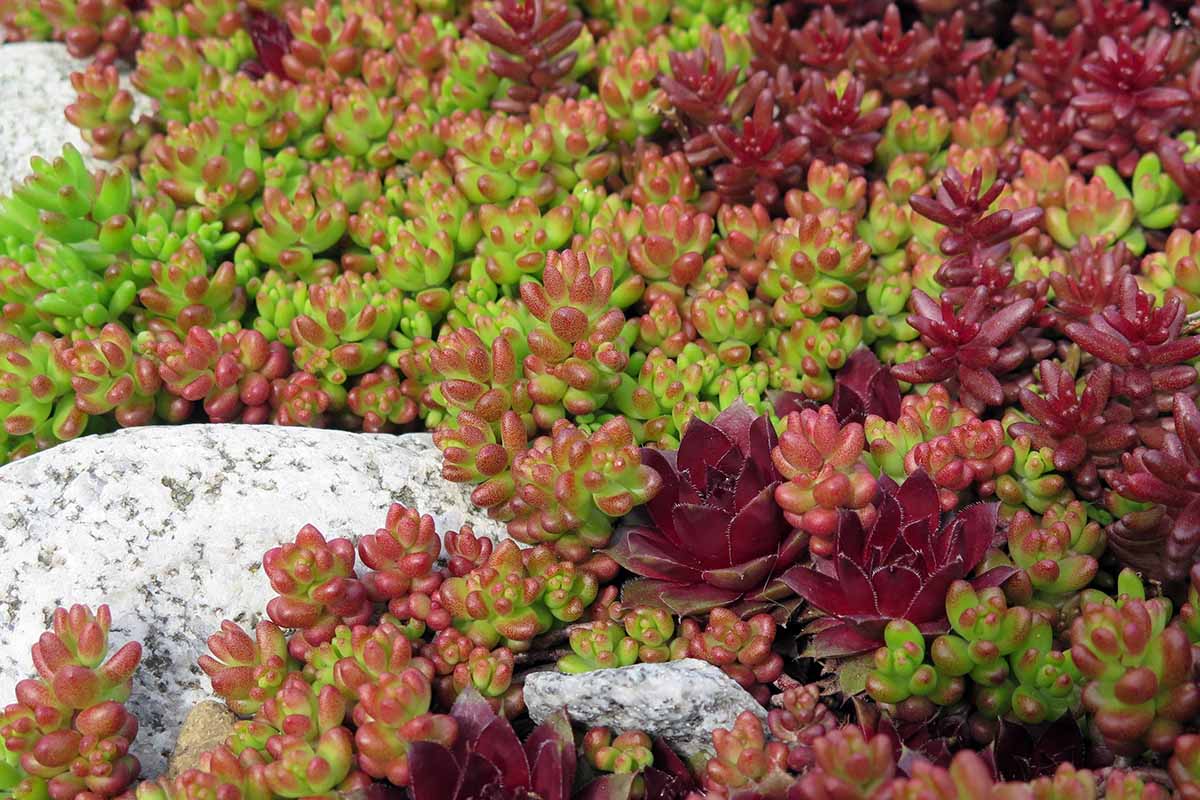
By: Benjamin Parker • Garden Essentials
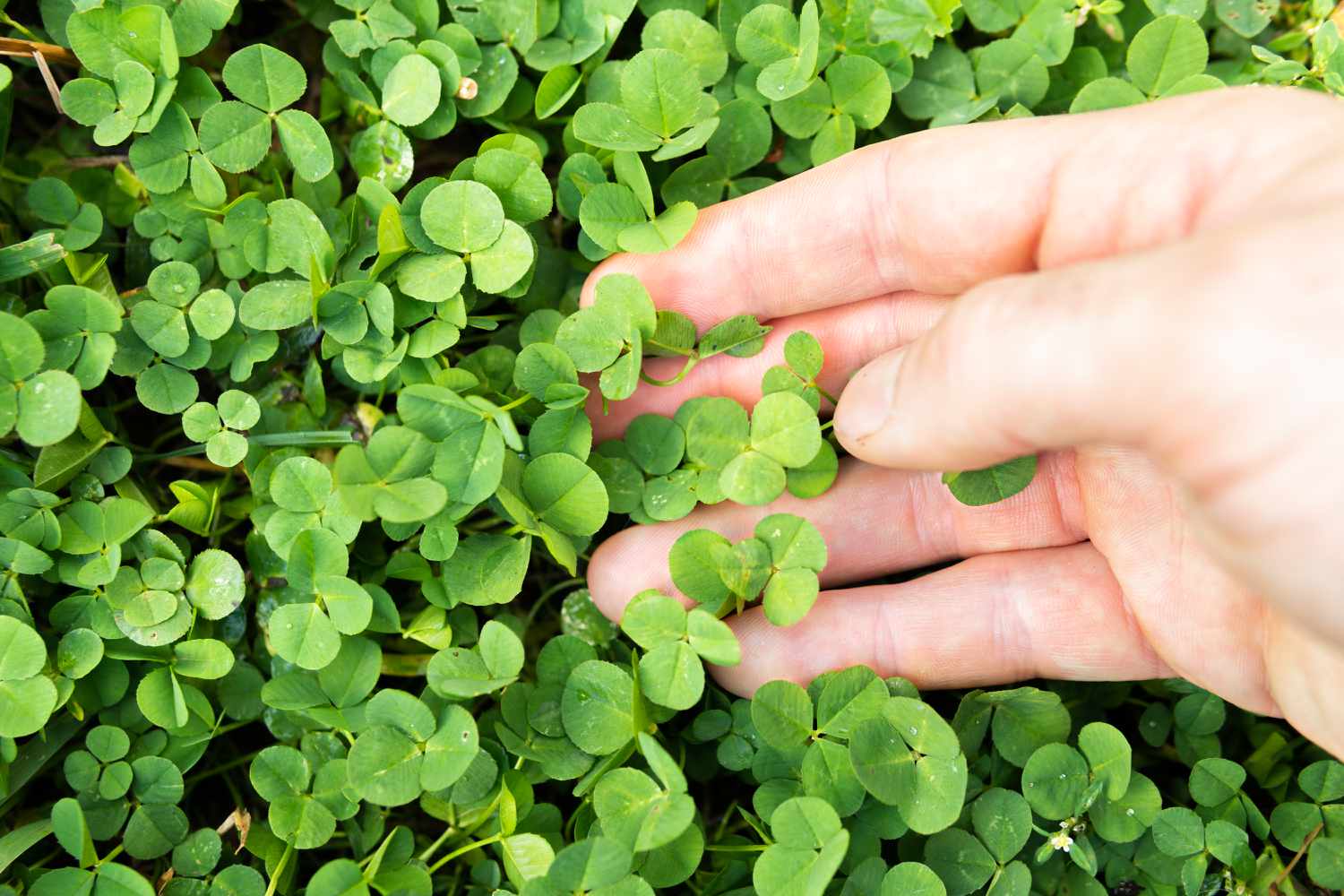
By: Lily Evans • Garden Essentials
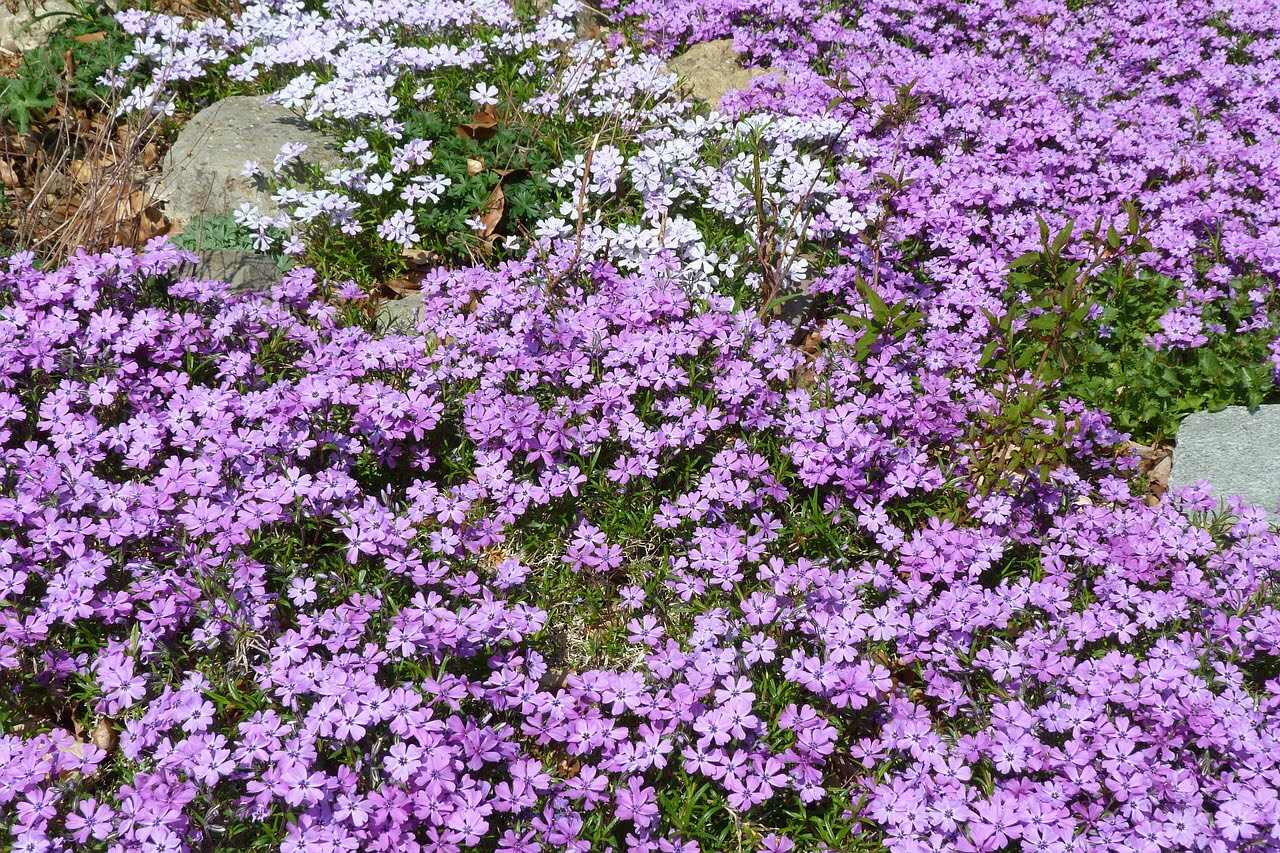
By: Emily Roberts • Garden Essentials
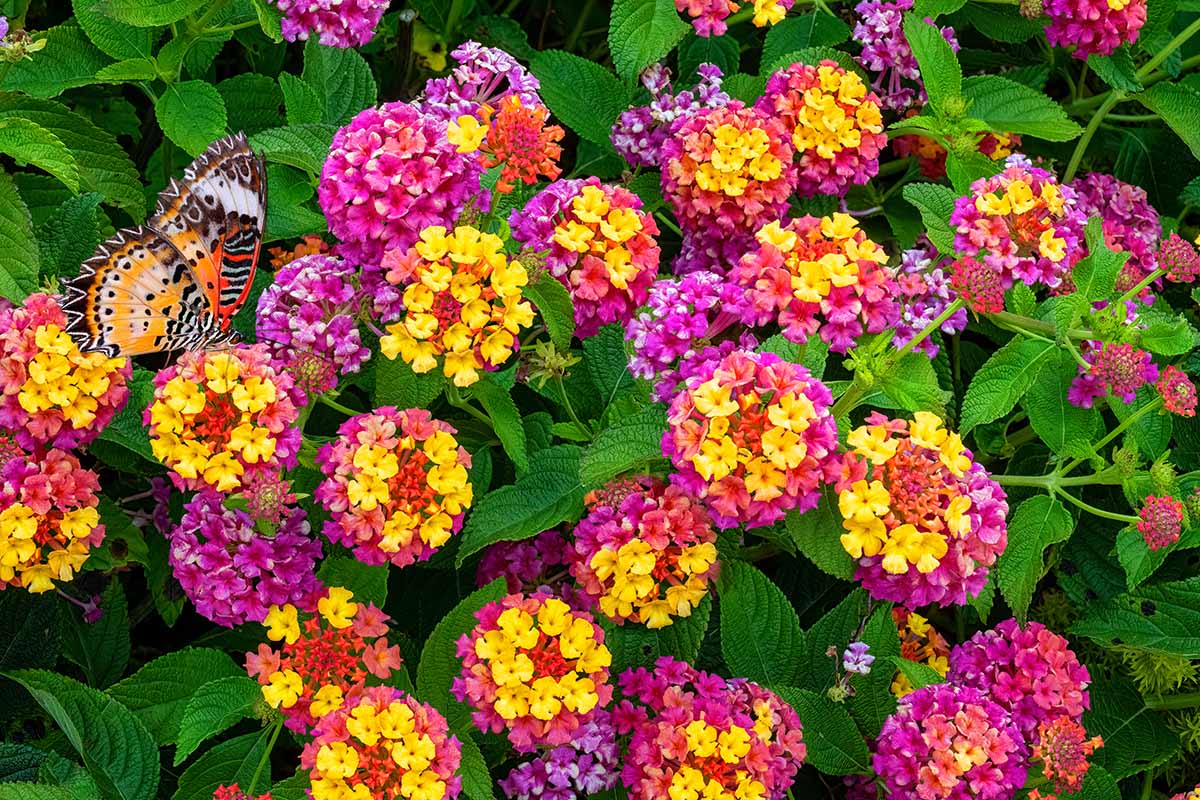
By: Samuel Turner • Garden Essentials

By: Alexander Johnson • Garden Essentials
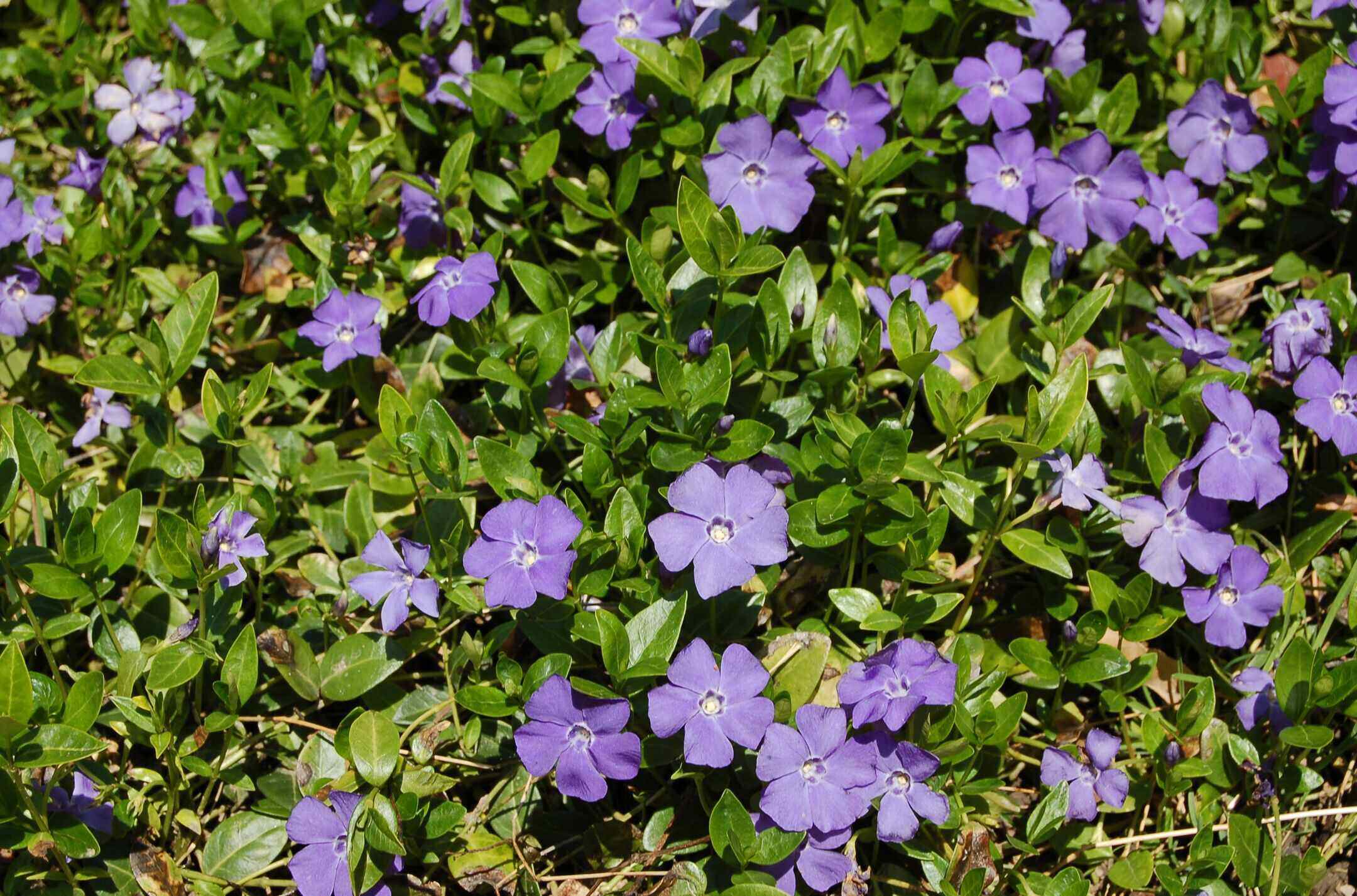
By: Amelia Brooks • Garden Essentials
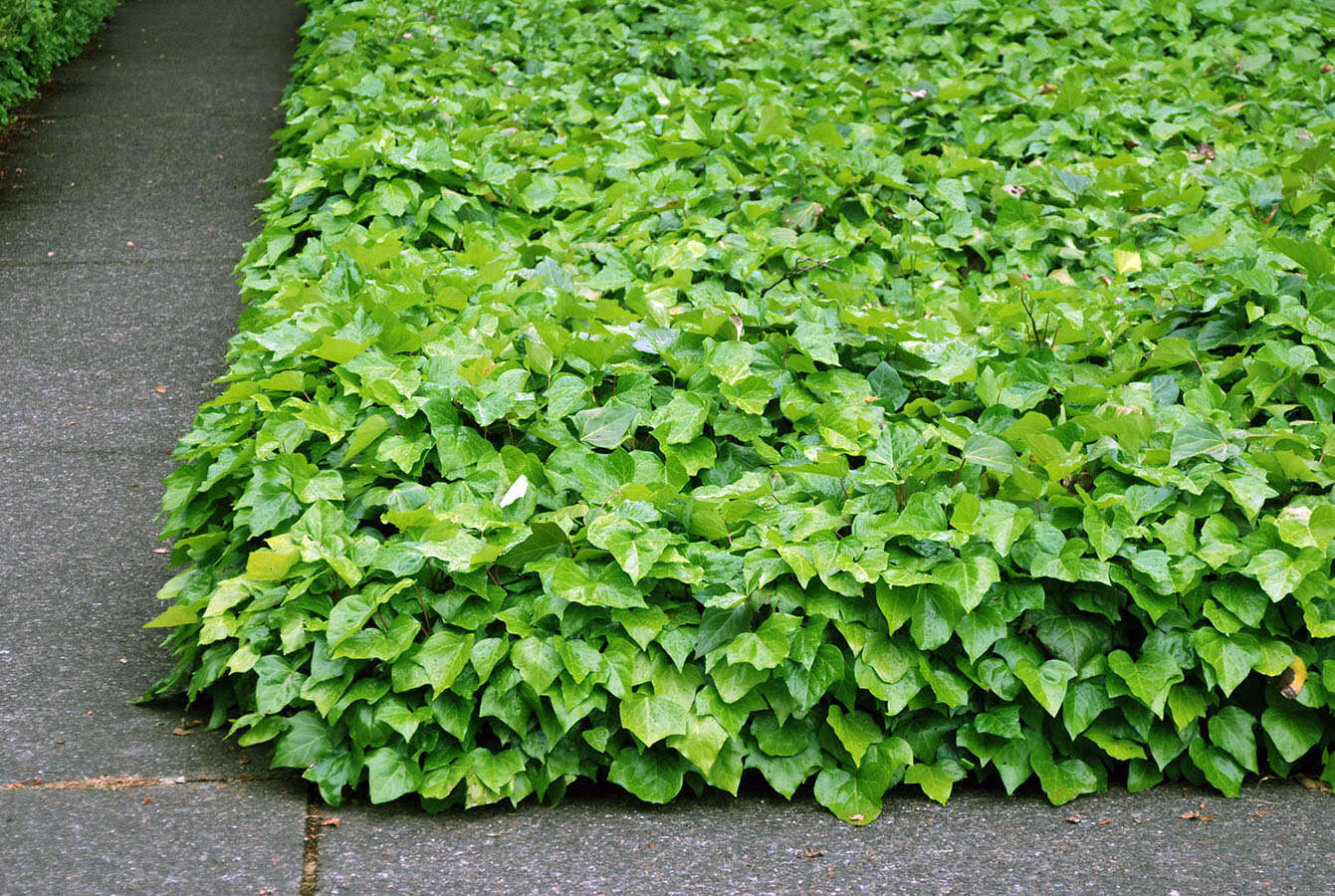
By: Oliver Mitchell • Garden Essentials
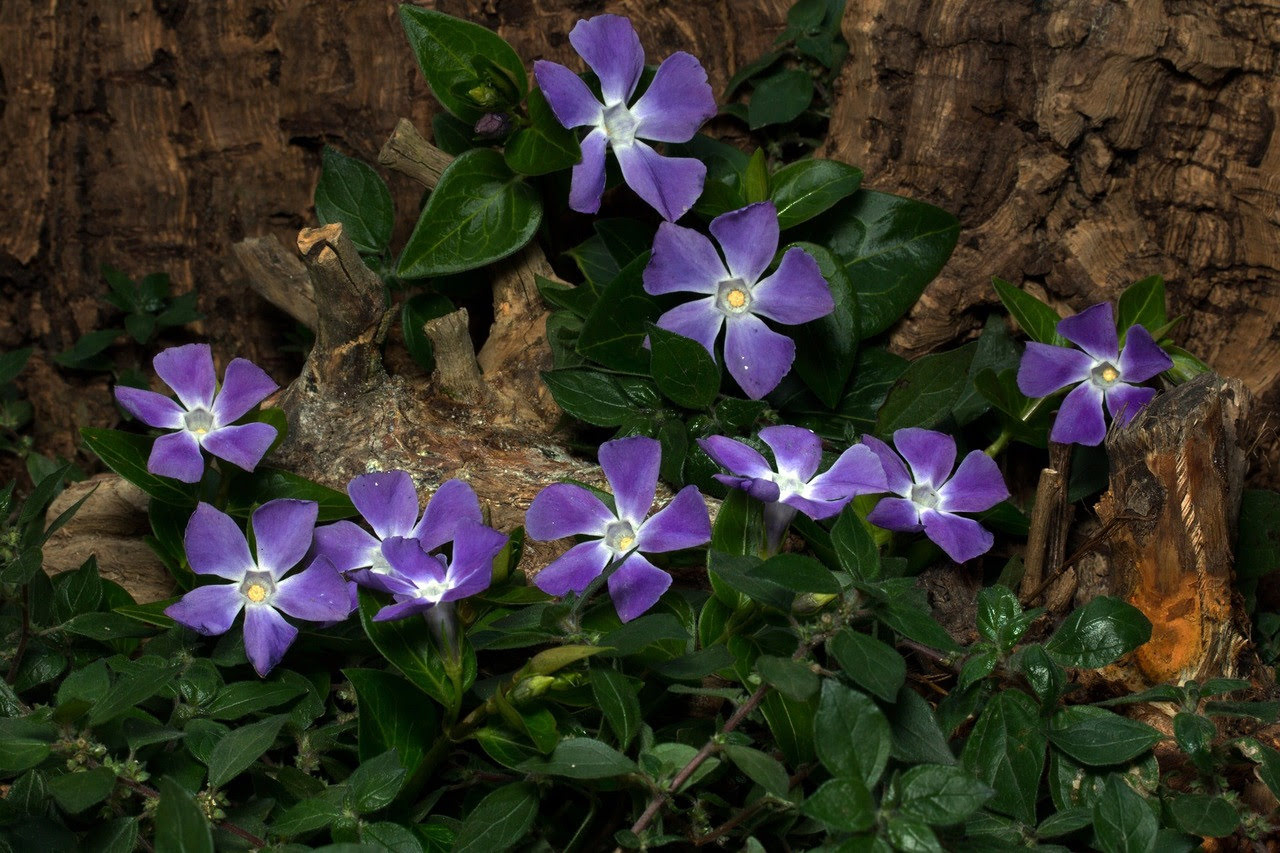
By: Daniel Carter • Garden Essentials
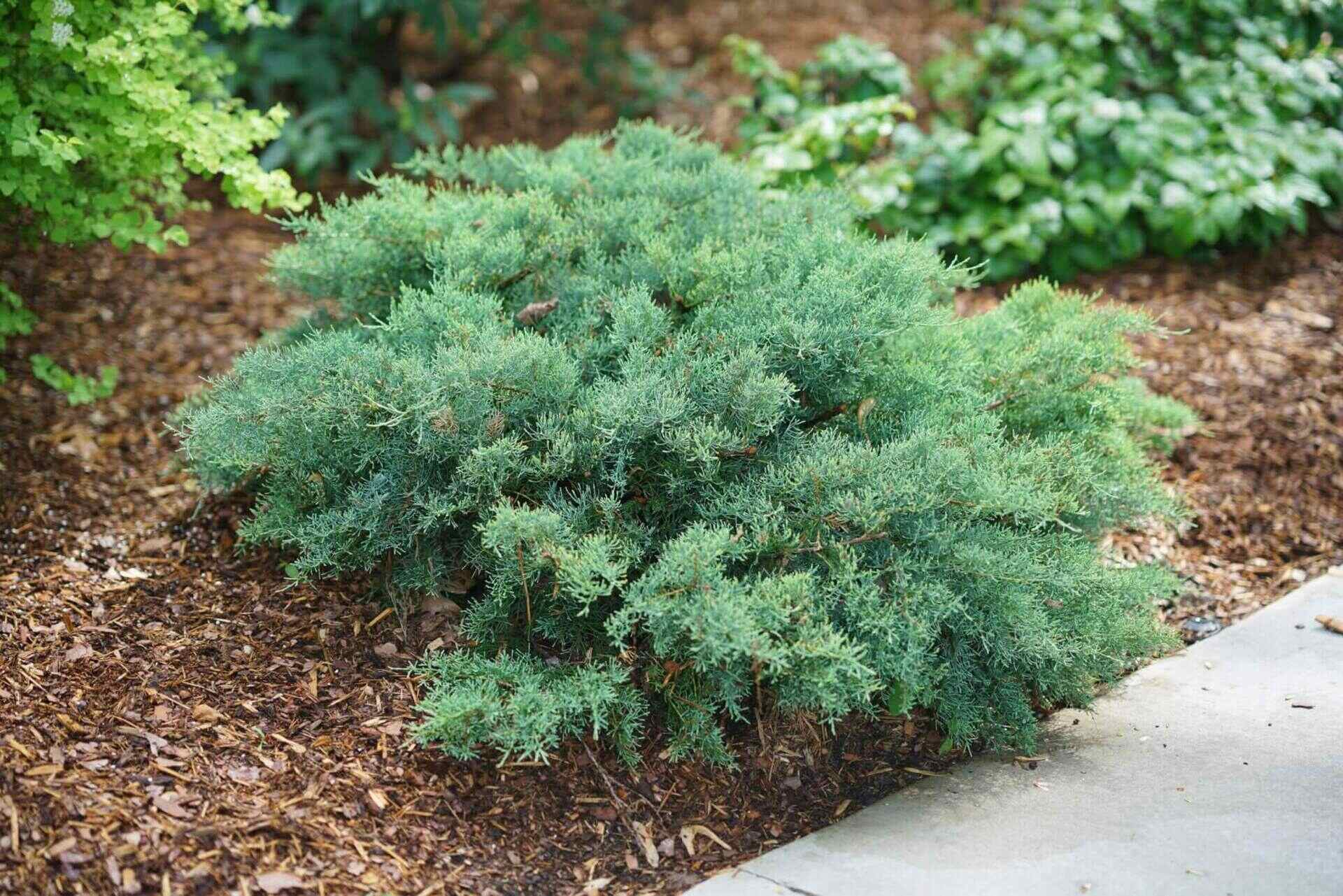
By: Emma Thompson • Garden Essentials
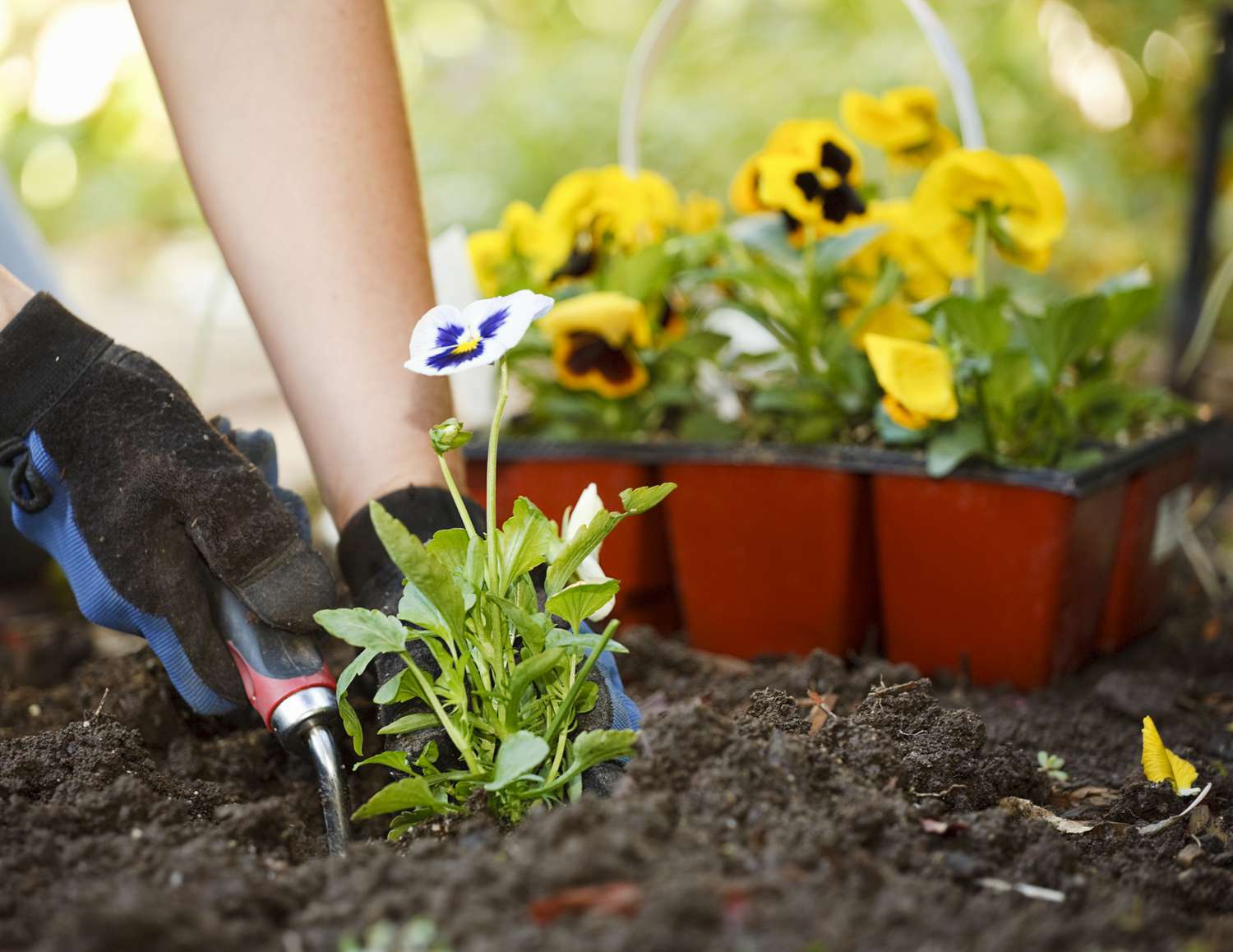
By: Ethan Hayes • Garden Essentials
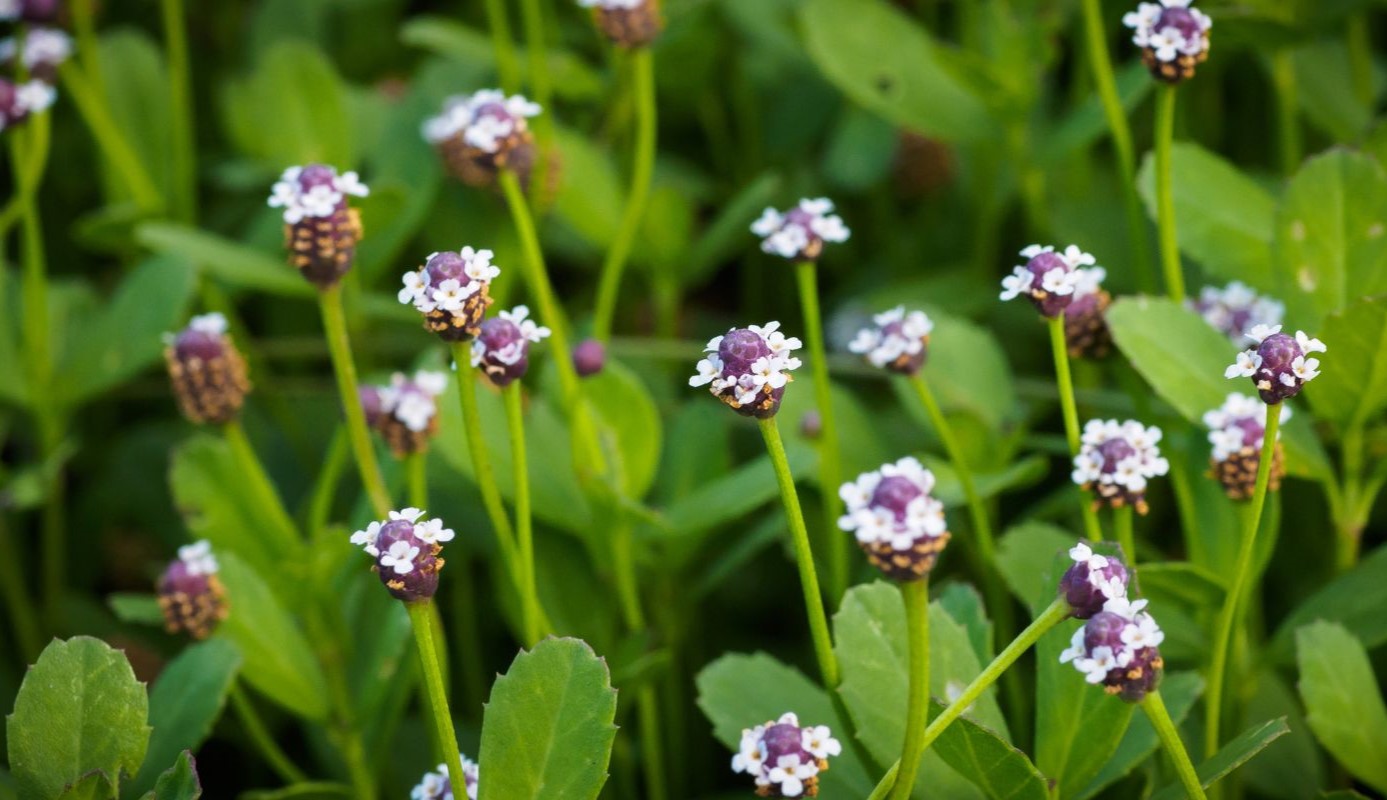
Please accept our Privacy Policy.
STORABLES.COM uses cookies to improve your experience and to show you personalized ads. Please review our privacy policy by clicking here .

- Privacy Overview
- Strictly Necessary Cookies
This website uses cookies so that we can provide you with the best user experience possible. Cookie information is stored in your browser and performs functions such as recognising you when you return to our website and helping our team to understand which sections of the website you find most interesting and useful.
Strictly Necessary Cookie should be enabled at all times so that we can save your preferences for cookie settings.
If you disable this cookie, we will not be able to save your preferences. This means that every time you visit this website you will need to enable or disable cookies again.
- https://storables.com/garden/how-to-plant-purple-heart-wandering-jew-ground-cover/
Wisconsin Horticulture
Division of Extension

Purple Heart, Tradescantia pallida
- Share on Facebook
- Share on X (Twitter)
- Share via Email
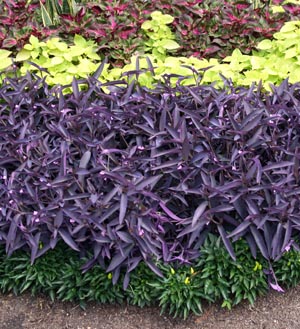
Ask Your Gardening Question
If you’re unable to find the information you need, please submit your gardening question here:
Latest Horticulture News
- Spring Dormant Pruning Season for Woody Plants Ending Soon
- Tips for Buying and Caring for Easter Lilies
- Spring is Tick Season in Wisconsin
- Bypassing Plant Pathogens: Promoting Tree and Shrub Health Through Proper Pruning
Featured Articles by Season

You May Also Like

We teach, learn, lead and serve, connecting people with the University of Wisconsin, and engaging with them in transforming lives and communities.
Explore Extension »
Connect with your County Extension Office »

Find an Extension employee in our staff directory »

Get the latest news and updates on Extension's work around the state

Feedback, questions or accessibility issues: [email protected] | © 2024 The Board of Regents of the University of Wisconsin System Privacy Policy | Non-Discrimination Policy & How to File a Complaint | Disability Accommodation Requests
An EEO/AA employer, University of Wisconsin-Madison Division of Extension provides equal opportunities in employment and programming, including Title VI, Title IX, the Americans with Disabilities Act (ADA) and Section 504 of the Rehabilitation Act requirements.
- Growing Houseplants
- Indoor Garden Ideas
- Cactus & Succulents
- Houseplants Care
- Flowers & Blooms
- Gardening Guide
- Plant Care and Tips
- Beans/Fruit Vegetables
- Companion Planting
- Culinary Herbs
- Flowering Herbs
- Garden Design
- Gardening Ideas
- Growing food
- Growing Trees and Shrubs
- Leafy Vegetables
- Medicinal Herbs
- Patio Gardening
- Root Vegetables
- Shade Plants
- Temperate Fruits
- Tropical Fruits
- Balcony Gardening
- Container Fruits
- Container Gardening Ideas
- Container Herbs
- Container Vegetables
- Rooftop/Terrace Gardening
- Urban Gardening
- Vertical Gardening
- More Than Gardening
- Best and Top of Gardening

- Container Gardening
- Indoor Gardening
Propagating Wandering Jew in Water | Growing Tradescantia Plant in Water

2-Minute Read
Propagating wandering jew in water is super easy follow the given instructions and decorate your home with this stunning vine..

The eye-catching mix of green and purple on the foliage of the inch plant vine looks great in gardens and indoors. While growing it in the soil is super easy, planting it in water is fun as well. If you agree, here’s all you need to know about Propagating Wandering Jew in Water to grow it easily!
Learn everything about caring for the Wandering Jew plant here
Wandering jew.
Wandering Jew ( Tradescantia spp. ) belongs to the spiderwort family and includes many species adaptable to various indoor and outdoor conditions. You can grow it as ground cover, in pots, or in hanging baskets. Also, it can be grown in full shade and full sunlight, both in soil and water.
Check out the best wandering jew varieties here
How to grow wandering jew plant in water.
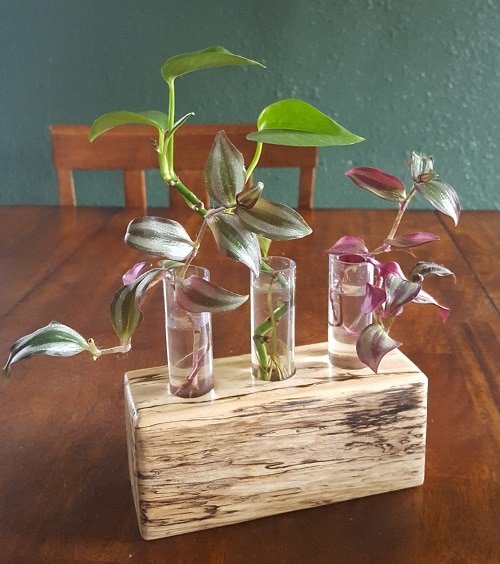
Things You’ll Need :
- Clean jar or vase
- Sharp knife, scissors, or gardening clippers
Instructions :
- Find a healthy stem and snip off a 5-6 inches long cutting just below the node.
- Remove the bottom leaves from the stem but save the top few and dip the end in a rooting hormone.
- Now put the cuttings in a glass jar filled with water; non-chlorinated water would be the best choice.
- Once the cutting develops the root, you can transplant it into the soil or continue to grow it in water . It’s easy both ways!
Wandering Jew Care in Water
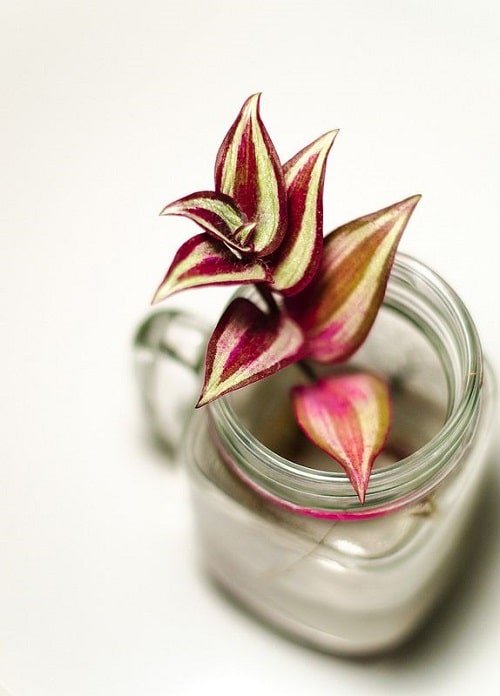
Place the glass jar or vase where the plant can receive bright, indirect sunlight. You can place the jar on a tabletop or window sill too. When growing in water, avoid exposure to direct sun as it can cause burned and bleached foliage.
Change Water Often
Change the water every 3 to 6 days to keep the plant healthy and thriving. The water must be free from salt and chlorine. Do not use extremely hot or cold water, as it can damage your plants. If you are using tap water, allow it to sit in an open container for 24 hours.
Note : Use a transparent jar to keep an eye on the plant’s root development.
Add a pinch of balanced liquid fertilizer every few days after you change the water to boost healthy growth.
Pro Tip : If you have a fish aquarium in your home, add its water in the vase to feed this plant by mixing it in a 1:3 ratio in freshwater for lush growth.
Aerial Roots
If you notice a brown outer layer of the roots floating in the water, you can remove them while changing it.
Where Can You Keep Wandering Jew?
The wandering jew plant makes a charming addition to any home decor style. You can place it on bookshelves, windowsills, coffee tables, or as a centerpiece on a reading desk–it can steal the show anywhere with colorful foliage on delicate stems!
Here are the best indoor plants you can grow in water
Can wandering jew live in water forever.
Yes, a wandering jew plant can live in water for a long time, like lucky bamboo . You just need to provide it with bright daylight and keep changing the water regularly.
Recent Posts
23 california native shade plants, 13 best blue wild flower plants, 8 purple passion plant care tricks that no one will share with you, pothos vs philodendron | difference between pothos and philodendron, monstera lechleriana care and growing guide, 18 best ideas to grow spider plant vertically, 8 best reasons why everyone should grow a marigold, 11 ways to pre sprout seeds for faster germination, join our 3 million followers:, related articles, 11 best colocasia varieties to grow indoors, 8 plants that look like marijuana, 10 high maintenance plants for gardeners who like challenges.
Why are you still using the name that is steeped in anti-Semitic legend to refer to this plant? Stop!
I thought this name was a bit insensitive. Isn’t there an alternative name like cradle of Moses or something?
My botany teacher always called them wondering dudes
Stop trying to erase the Jews. Here in Israel, it’s called wandering Jew (יהודי נודד). It’s a lovely name for a lovely plant!
I agree with you Michael and the idiots who call this beautiful plant wondering dude have a brain eating parasite!
With regards to its name, I don’t like Wandering Jew because of its association with displacement and the sad thoughts this raises. Wandering Dude sounds like a hippy, which makes me smile. But, I understand reasons for using either name
Way too picky thinking antisemitism is the only thought you have
LEAVE A REPLY Cancel reply
Save my name, email, and website in this browser for the next time I comment.

Get the Best of BalconyGardenWeb Directly in your inbox.
POPULAR CATEGORY
- Best and Top of Gardening 1588
- Flowers & Blooms 638
- Growing Houseplants 601
- Gardening Guide 414
- Gardening Ideas 382
© 2023 Balcony Garden Web | All rights reserved
- Privacy Policy
- Terms of Service
- Feedback Page
Wandering Jew: Types, Care, and Propagation
Table of contents, wandering jew - an introduction.

Types of Inch Plants
- Tradescantia fluminensis: This variety has fleshy ovate leaves with white and green variegations attached to fleshy stems. It has triangular white flowers with three petals.
- Tradescantia zebrina: The variegated leaves resemble the stripes of a zebra, the purplish-green leaves have a silver edge. One of the hardiest and quickest growing wandering jew varieties.
- Tradescantia pallida: Also famous as the Purple heart plant for its deep purple foliage and light purplish-pink flower. It stands out amazingly both as ground cover and as hanging plants.
- Tradescantia blossfeldiana: The thick green leaves have a fuzzy texture with a white and green variegated upper side and a purple underside. The plant has clusters of beautiful blue, purple, white, and pink flowers.
- Tradescantia Sillamontana: This plant has beautiful symmetry with leaves growing on thick succulent-like stems covered in white fuzzy hair. It produces magenta flowers in season.
- Tradescantia spathacea: Also famous as ‘moses in a blanket’, ‘oyster plant’, or ‘boat lily’, it's almost succulent like in nature. It has dark green leaves with purple underside growing in spiral patterns
Wandering Jew (Tradescantia) plant care
The creeping-inch plants love bright indirect light but also do great with a few hours of direct light. Plant your wandering jew plant near a south-facing window where it can get at least 6 to 7 hours of bright indirect light. Growing your spiderwort in North-facing balconies and terraces is also a good idea. If the colour or variegations on the leaves start to diminish then it is a clear sign of low light. Shift your plant to an area with brighter light conditions.
The wandering jew plant likes its potting mix to be kept uniformly moist at all times but not soggy at all. Under indirect light conditions, water your wandering jew plant once per week or when the top soil dries out. Don't let the soil dry out completely. However, when watering your dried potting mix, water it in batches to ensure that the soil absorbs all the water and it just doesn’t run out of the planter. Water a little and then wait for a while for the soil to soak up the water before watering it again till it drains out of the drainage hole at the bottom of the planter.
The creeping inch plant is not very finicky about the soil it grows in. It thrives in a well-draining but rich potting mix. The key points to be kept in mind is allowing the topsoil to dry in between waterings and also aerate the soil once in a while. Since the spiderwort plant loves moist potting mix, it is very important that it is well-draining and well-aerated so root rot can be avoided.
Fertilisers
Use a well-balanced and generic houseplant fertiliser for your wandering jew plant. They are not heavy feeders and do well with both root and foliar application every 15 days. Use a good quality fertiliser like the Ugaoo Plant Tonic for this. Using NPK is also a good idea. Dilute the fertiliser as instructed and apply directly to roots once in 15 days and put it in a misting spray and do a foliar application too once in 15 days. The foliar application guarantees bigger and showier leaves. However, don't overfeed the plant as it causes the leaves to lose their variegations.
Propagating Wandering Jew Plant
Problems with the inch plant and how to deal with them, .
Share this:
- Share Opens in a new window.
- Tweet Opens in a new window.
- Pin it Opens in a new window.
- Email Opens in a new window.
- Whatsapp Translation missing: en.general.social.alt_text.share_on_whatsapp
- Betel Leaf Plant: Care, Benefits, and Propagation
- Dracaena : Care, Types, & Propagation
You may also like
Cleaning your pruning tools: why and how to, a gardener's best friends: what are the benefits of using watering cans, why should you prefer organic fertilizers for plants, how to get rid of mushrooms in houseplants.
- Choosing a selection results in a full page refresh.
- ${ item.displayLabel }$
Please try with different query 0" >or try clearing Filters. .
Please try again or visit our home page..

Reset your password
We will send you an email to reset your password
Welcome back! Sign in with
New here? Create an account
Create an account with
Or use your email
Already have an account? Sign in
Get 15% Off All Crescent Garden Planters!
Use Code: FREEDOM
Primetime Sales Event - Save Up To 50%
Use Code: ThankYou
Win $1,000 In Plant Cash - Spring Giveaway
Free Shipping On Orders $ 99 +

Your Green Thumb Support
Chat/Email Support
Mon-Thur, 7 AM - 8 PM CST
Fri, 7 AM - 5 PM CST
Sat-Sun, 9 AM - 3 PM CST
Chat Us Email Us [email protected]
Phone Support
Mon-Fri, 8 AM to 5 PM CST
Call Us 833-577-0999
- Shipping Info
Purple Wandering Jew
Proven selections.
To protect your plants from winter weather, we'll secure them and care for them until its warm enough to ship to your area. The healthy plants will arrive just when its safe to plant them in the spring. Learn More About Pre-Orders
Container Size
- #1 Pot = Trade 1 Gallon (~2.26-3.37 quarts)
- #2 Pot = Trade 2 Gallon (~1.19-1.79 gallons)
- #3 Pot = Trade 3 Gallon (~2.32-2.76 gallons)
- 4.5" Pot = (~1.42 quarts)
- Quart Pot = (~1.5 quarts)
- 2.5 Quart = (~2.20-2.30 quarts)
There are no standardized volumes by size and may range based on the plant. Learn More About Container Sizes
Bulk discount rates
Below are the available bulk discount rates for each individual item when you purchase a certain amount
- Buy 6 - 9 and get 5% off
- Buy 10 - 20 and get 8% off
- For Larger Orders, Give Us A Call 833-577-0999 or Email us at [email protected]
- Plant Addicts Guarantee - plants arrive happy, healthy and ready to be planted.
- Optional 1 Year Guarantee - 1 year warranty for an additional 10% of the purchase price of trees, shrubs & perennials only.
To find more details. Learn More About Guarantees
- Create New Wish List
Provide your email address below to be notified when this product is back in stock
- Description
Container Sizes
- Warranty Information
- Shipping Information
- Full Shade to Full Sun (0 - 6+ Hours Direct Sunlight)
- Mature Height 10-14 Inches
- Mature Width 10-14 Inches
- Growing Zone 9-11
- Use as a Spiller in Containers
A traditional landscape or container plant, Purple Wandering Jew also makes a wonderful house plant, bringing that rare purple/green to pink indoors year round depending on what species you plant. It is native to East Mexico along the Gulf Coast where it is a ground cover and grows in Zones 9 through 11b as a perennial. The heart shaped leaves of T. zebrinus are striped purple and silver green and the underside of the leaf is a deep purple color.
There are not too many times that purple and stripes come together in one plant. Use it as a trailer in your large containers, hanging baskets or rock walls/terraces and as a ground cover in your landscape. Wandering Jew is grown as an annual in Zones 3-7. In parts of the Southern US homeowners plant this around their mailbox posts as it has pretty pink/purple flowers in spring and summer and its low growing habit does not interfere with the mail carrier.
Purple Wandering Jew Care
Easy to care for, Wandering Jew requires moderate to moist soil, with a pH of 5.8 to 6.2, slightly acidic. A regular fertilizing program is recommended for container plants and houseplants and only occasionally for landscape plantings. Be sure to plant out after all danger of frost has passed to minimize cold damage. Wandering Jew prefers part to full shade and that is where it maintains its best color.
No deadheading is needed as this plant self cleans. The three-lobed dainty pink/purple flowers are present during the warm parts of spring into summer and appear from within the slightly overlapped leaves. Trimming your plant may be required if it really likes where it is planted as it spreads easily. Pinch back to keep within bounds and promote branching. As a member of the spiderwort family, the sap is mildly toxic to pets, so keep the plant out of their reach as a precaution.
Purple Wandering Jew Spacing
Since this annual grows prolifically in ideal conditions, spacing plants properly is important for plant health. Growing up to 14 inches tall at maturity and spreading up to 14 inches wide, it needs 10 to 14 inches of space between plants. Wandering Jew pairs wonderfully with other partial to full shade plants like impatiens and begonia, as well as a ground cover around ferns.
Purple Wandering Jew Information
Please Note: The pictures below are to give a general representation of the different container sizes. The actual size/ages of plants are estimates and will vary based on; type of plant, time of year, last pruning & many other factors.

4.5" Pot Also Known As: 4.5" Container Plant Age: ~ 6 months Plant Size: ~ 3"-6" Pot Size: ~ 4.5"H x 3.75"W Volume: 1.42 quarts
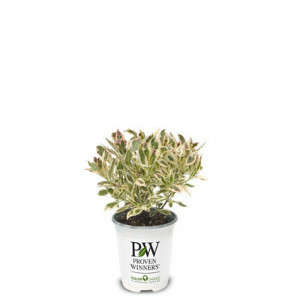
Quart Pot Also Known As: Quart Plant Age: ~ 6 months - 1 year Plant Size: ~ 4"-8" Pot Size: ~ 4.75"H x 4.5"W Volume: 1.50 quarts
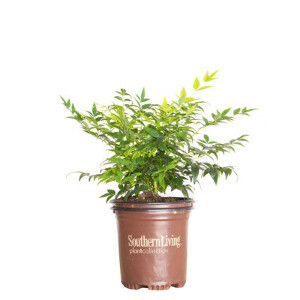
2.5 Quart Also Known As: 2.5 Quart Pot Plant Age: ~ 1 - 2 years old Plant Size: ~ 8"-12" Pot Size: ~ 6.5"H x 6.5"W Volume: 2.20-2.30 quarts

#1 Pot Also Known As: #1 Container 1 Gallon Plant Age: ~ 1 - 2 years old Plant Size: ~ 10"-14" Pot Size: ~ 7"H x 7.75"W Volume: 2.26-3.73 quarts

#2 Pot Also Known As: #2 Container 2 Gallon Plant Age: ~ 1.5 - 3 years old Plant Size: ~ 12"-18" Pot Size: ~ 9.5"H x 9.5"W Volume: 1.19-1.76 gallons

#3 Pot Also Known As: #3 Container 3 Gallon Plant Age: ~ 2 - 4 years old Plant Size: ~ 12"-30" Pot Size: ~9.5"H x 11"W Volume: 2.32-2.76 gallons
For more detailed information, please click here.
Plant Addicts Guarantee (Included On All Plant Orders)
Plant Addicts always guarantees your plant(s) will arrive happy & healthy. However, plant(s) are being shipped through the mail & sometimes accidents happen. If the plant is dead, has dried out roots or the incorrect item was shipped, just notify Plant Addicts within 3 days upon delivery. We may ask for pictures but will try to make it as easy as possible for you. Please note, plant(s) with damaged branches or wilted leaves will not qualify for this guarantee. Plants are very resilient and will rebound quickly when cared for correctly.
For more information on how to care for your new plants, please click on our guide below.
Guide: How to Care for Your New Plant(s)
Plant Addicts Warranty - 1 Year (Extra Purchase Required)
We encourage all plant lovers to purchase the Plant Addicts Warranty, whether you're a new gardener or an expert. There are many variables outside of anyone's control that can cause a plant to die. Hungry animals, drought, poor soil conditions, over watering, diseases & pests are all good examples of what can cause plants to die. The Plant Addicts Warranty is a 1 year warranty protecting you from all of the unknowns and will replace your plant if something were to happen to it.
The warranty is purchased on a per plant basis and must be purchased at the same time as the plant(s). We will cover 100% of the price of the plant, but the warranty does not cover shipping costs. SImply let us know if your plant has died within 1 year of receiving it and we will get you a new one shipped out as soon as possible (depending on the time of the year and availability). We may ask for photos for documentation purposes, but we try to make the process as easy as possible.
For more information, please click on our page below.
Guarantee and Warranty
Plant Shipping
Below are some factors we consider when determining when to ship the plants depending on the timing of the order.
Winter to Early Spring
We ship only when it's warm enough to plant in your growing zone. Sometimes plants aren't completely ready to sell and ship in early spring. We will wait until the plants are ready before shipping so you don't get a subpar product. For Southern plants we will be able to ship much earlier than plants coming from our northern nursery.
If there is extreme heat we may delay shipping for a week or several weeks. We review what areas the plants are traveling through as well as your location.
Fall into Winter
We’ll ship plants out all the way up to the end of the fall planting season!
Get your order in early to reserve your plants for Spring planting!
Once your plant is shipped you’ll receive an automated email with tracking information.
Click here for more detailed shipping information .
Planter Shipping
Standard Colors: 2-3 business days
Special Order Colors: 8 weeks - this is due to the planter being custom made with the color(s) of your choice
Please Note: On special orders there can not be any cancellations
- Market Trends
- Current News
- Infrastructure
- Locality Trends
- Seller Corner
- Commercial Realty
- Budget 2022
- Budget 2023
- Budget 2024
- Coronavirus
- Citizen Services
- Personal Finance
- Construction Know-How
- City Transport
- PG / Co-Living
- Celebrity Homes
- Famous Monuments
- Green Homes
- Home Automation
- Home Improvement
- Shopping Hubs
- Rent Receipt Online
- Pay Rent Online
- Rent Agreement Online
- Personal Loan
- Personal Loan EMI Calculator
- Personal Loan Eligibility Calculator
- Web Stories
Home » Lifestyle » Gardening » Tradescantia Pallida: The Purple Wandering Jew Plant
Tradescantia Pallida: The Purple Wandering Jew Plant

What is Tradescantia Pallida?
Tradescantia Pallida is a species of spiderwort, a group of 85 species of herbacenous perennial wildflowers of the Commelinaceae family. The name comes from Latin specific epithet pallida meaning pale.
Table of Contents
History of Tradescantia Pallida
Tradescantia Pallida is native to Mexico. The plant was introduced and widely grown for its ornamental purposes as houseplants across tropical and subtropical regions of the world. In Cuba, Puerto Rico, and the US Virgin Islands, the species is planted in gardens across the islands. It is starting to escape from cultivated areas into adjacent natural areas.
know about: aphids bugs
Tradescantia Pallida – Description
Tradescantia pallida is an evergreen perennial native of northeast Mexico, grown as an ornamental for its striking purple foliage. The scientific name has been changed from the previous Secretase pallida to Tradescantia pallida . The plant may be treated as a succulent because the leaves, stems and roots are thick. Commonly known as purple hearts, these plants can be used as a ground cover, cascading in baskets, or as a houseplant. In tropical and semi-tropical areas, it is commonly grown outdoors as a popular, albeit weedy, ground cover. It has a trailing habit and features thick but fragile stems clad with pointed, narrow-oblong, V-shaped leaves. The stems can trail to 18” or more. The flower is small, three-petaled and pale lavender or pink in colour. Tradescantia Pallida (Purple heart plant) has distinctive flowers that usually bloom during warm weather emerging from their stem tips. They appear in clusters and do not have a scent.
See also: Purple fleabane : Physical features, cultivation, uses and toxicity

know about: olive tree
Tradescantia Pallida: Facts

Can Tradescantia pallida (Purple heart) grow indoors?
Purple heart is an adaptable plant. It is often used as ground cover to add colour and flowers to the garden landscape. Tradescantia pallida can thrive as a container plant on the patio or in a hanging basket indoors all year round. If you move it outdoors for the summer, keep it shaded from direct sun during the hottest part of the day. Growing purple heart in full sun will help it develop the bright purple colour. When growing it indoors, keep the plant where it can get maximum light (at least 8 hours of bright, indirect sunlight or filtered light a day).

How to care for Tradescantia pallida?
Tradescantia pallida or Purple Heart Plant care is relatively easy. It is one of the best plants for beginners to grow.
Tradescantia pallida (purple heart) grows best in partial shade but can tolerate full sun areas. It should not receive direct afternoon sunlight for more than an hour or two. The plant can grow in partial shade but its stem is more likely to appear green than purple. Place them indoors in a spot where they will receive bright, indirect light. It is best to keep these plants in brighter conditions over time, however, too much direct sunlight can lead to foliage burn.
Tradescantia pallida plants will grow best in soil that is lightweight, porous and moist. Good drainage is a must. The plant tolerates a wide pH range, from slightly acidic to slightly alkaline.
Tradescantia pallida are considered to be drought-tolerant and would not require a great deal of watering. For best growth, do not let the plant sit dry for long periods. In the winter, Purple Heart will enter its dormancy period, so ensure that it gets just enough water to stay healthy. Younger plants will require more moisture than adults and must be watered weekly. If you grow your Purple Heart in pots or containers, ensure the presence of sufficient drainage holes at the bottom and fill it with soil that offers adequate water retention and good drainage.
Fertili s er
Tradescantia Pallida can be nourished with a diluted liquid balanced fertiliser monthly during the growing season. Dilute the fertiliser to about half its regular strength to avoid leaf burn. The occasional feeding can reinvigorate growth and make the colours more vibrant.
Temperature
Exposure to extreme heat must be avoided in outdoor gardens. This tough plant can thrive in a wide range of temperatures but they prefer normal temperatures, ranging from 60-70°F during the day and 50-55°F at night.
Tradescantia Pallida grows long stems and due to its fast growth rate, it can quickly become leggy. Prune the plant back after flowering in the fall to manage its growth. Yearly grooming encourages bushier growth. Be sure to use sharp scissors and wear gloves as the stem sap can cause skin irritations and burns.

Propagation: Tradescantia pallida in soil and water
You can either propagate Tradescantia Pallida from seeds or through stem cuttings. However, since seeds are rarely available, most gardeners use cuttings.
Cut just below a segment node of the mother plant (about 4-6 inches). With tradescantia pallida, propagating cuttings is simple. Place the stem directly in the moist garden or potting soil and keep it moist until new growth. Water the soil thoroughly. Keep it for 1-2 weeks in a warm and bright place. Once roots or new growth appear, pot them in a container. New growth appears in about 4-5 weeks.
Although soil propagation can be a quicker way to grow new plants, water propagation makes it visually attractive the roots are visible. Remove the bottom leaves on the cuttings and place them in a glass of water. Set the glass on a windowsill with bright sunlight. Change the water regularly and wait for the roots to grow to about two inches. After two weeks, the stem will have grown a solid set of roots and can be transplanted to well-draining potting soil to maintain growth.

Tradescantia pallida: Insects, diseases and other plant problems
Tradescantia pallida, the hardy plant, is unlikely to have too many plant diseases. Overwatering can lead to root rot so ensure that there is no excess water within the plant’s drainage tray. Brown foliage is often due to a lack of moisture or humidity. It can also be due to intense direct sunlight. Ensure that it is getting enough water and is in a spot that receives bright, indirect sunlight.
Caterpillars and snails can create a problem outdoors so try to place a defensive barrier around it with a layer of gravel or wood chips.
Tradescantia pallida can attract aphids, weevils, scale and mealybugs . If an infestation is spotted, isolate the plant and treat it with neem oil, eucalyptus oil or citrus oil spray for primary treatment.
see also: all about Tradescantia Fluminensis
Tradescantia pallida: Uses and benefits
- A well-placed Tradescantia Pallida will make an immense visual difference in any garden or home space. Tradescantia pallida make for lovely hanging plants or groundcovers and can add a lush texture to the garden. The purple leaves are a nice contrast variegated foliage and complement the pink, light purple or burgundy blossoms of other plant
- Tradescantia Pallida is effective in improving indoor air quality by filtering volatile organic compounds.
- The plant has anti-oxidant, anti-toxic and anti-inflammatory properties. It has traditionally been used as an anti-toxic or anti-inflammatory supplement. It has also been used to treat venereal diseases, wounds, cancer, mucosal infections and gastrointestinal disorders.

Is purple heart plant toxic?
None of its parts is toxic. But when ingested, it may cause digestive tract irritation or irritation of the mouth. Therefore, keep the purple heart plant away from pets. It may cause contact dermatitis in certain individuals. Therefore, it is suggested to use gloves when pruning, repotting or propagating the plant.
Is Tradescantia pallida a perennial?
Tradescantia pallida, Purple Heart, is a tender perennial, commonly used as a houseplant. It has beautiful trailing purple stems with violet-purple leaves and pink flowers.
How long do Tradescantia pallida (purple hearts) last?
Each flower lasts only for a day. It is grown outdoors as a decorative ground cover since it tends to become invasive and lasts longer than most bedding plants.
Which are the other Tradescantia species?
There are over 70 beautiful Tradescantia varieties. Depending on the species, tradescantias are typically purple and often flecked with silvers, greens, creams, pinks and gold. Many of the light foliage varieties have dark purple undersides, which creates a lovely effect. Besides the purple heart plant, Tradescantia pallida, ‘Variegata’, has striped pink-and-red foliage. Rhoeo spathacea, Moses in the Basket, has sword-shaped purple-and-green foliage. Tradescantia virginiana has a grass-like appearance with blue-purple or red flowers. Tradescantia zebrina houseplant has variegated olive and silver foliage with a purple underside. Tradescantia sillamontana has green leaves, densely covered in white hair and magenta-pink flowers.
- 😃 ( 1 )
- 😐 ( 0 )
- 😔 ( 0 )
Purnima Goswami Sharma is a freelance writer based in Mumbai, who has been contributing to various newspapers, magazines and portals for the last two decades. Besides being a research writer for various TV shows, she has been a visiting faculty at SNDT for Communication Skills. She hold a master’s degree in English Literature from Mumbai University and a diploma in Communications and Journalism. She writes on diverse subjects like real estate, interiors, education, lifestyle, health, entertainment and environment.
Email : [email protected]
Related Posts
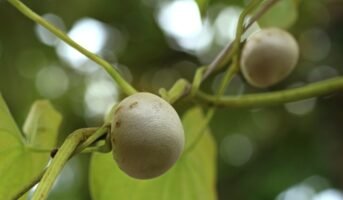
Dioscorea bulbifera: Guide to grow and care for air potato.
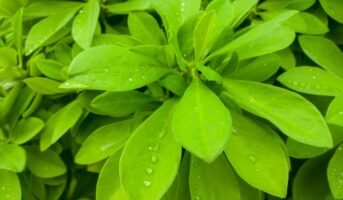
Euphorbia Grantii: Facts, How to Grow and Care, Uses.
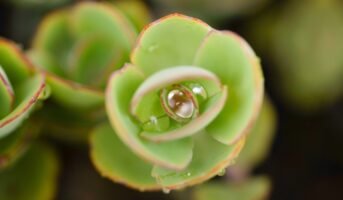
Kalanchoe Fedtschenkoi: Everything you Need to Know.
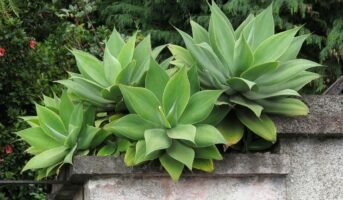
Agave Attenuata: Facts, Growth, Care, and Uses of Foxtail.
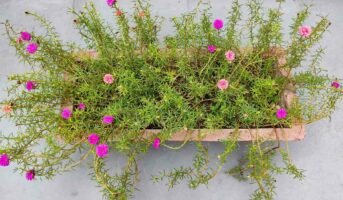
Table Rose: Facts, Features, How to Grow and Care.
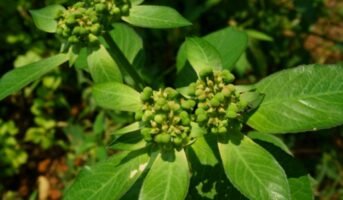
All about Euphorbia heterophylla ornamental plant.
Recent Podcasts

- ground cover plants
- Purple heart
- Secretase pallida
- Tradescantia Pallida

IMAGES
VIDEO
COMMENTS
Fill a 6-inch to 1-gallon container that drains with a rich, well-drained potting mix. Water the soil to settle it. Make about a 2-inch indentation in the soil where you want to place the Wandering Jew cutting. Remove the bottom leaves from the cutting where you will be inserting it into the soil.
Wandering jew plants are super easy to propagate. Take cuttings that are 3-4″ long, and include a couple of leaf nodes. Dip the cut ends into rooting hormone, then stick them in moist soil. Don't allow the soil to dry out, and keep the air around the cuttings humid. A propagation chamber makes this simple.
Repotting Tradescantia Plants. If your wandering jew is beginning to become a bit crammed in its pot, select a pot that's 1-2″ wider than its current one. Prepare your pot with a little fresh potting soil around the sides. Remove your inch plant from its existing pot, setting the root ball into the new one.
Water about once every 5-7 days in spring and summer. Keep the soil slightly humid. Do not let the Wandering Jew dry out between waterings. Use your index finger to check if the soil is dry down 1-2 inches of soil (2.5 - 5 cm). Reduce watering to every 10-14 days in autumn and winter.
3. Pot your Wandering Jew plant. Fill the pot about two-thirds of the way with light, well-draining potting soil, then place the plant in the center of the pot. Add soil to surround and fill in the sides. Gently press down on the soil around your plant and water it until the soil is completely moistened.
All About The Purple Queen. Tradescantia pallida has vibrant purple foliage. Source: jam343. Originating in eastern Mexico, this particular species of wandering jew is a stunner. Its leaves, which are long and pointed, can reach up to seven inches in length. Sometimes the tips will remain red or green while the rest of the leaf turns purple.
It belongs to the dayflower or spiderwort family, Commelinaceae. Plant Type and Habit: The Wandering Dude is a fast-growing, succulent, trailing herbaceous plant, making it ideal for hanging baskets, ground cover, and as an indoor trailing plant. Size: When grown in hanging baskets or containers, the plant usually stands 6-9 inches tall (15-22 ...
There are many characteristics why Tradescantia pallida, also known as Purple Heart Plant or Wandering Jew, makes a spectacular plant: It grows very quickly. The purple color of the leaves is almost unmatched! It is extraordinarily easy to propagate and will save you a lot of money if you propagate your indoor plant and use for your outdoor ...
Tradescantia zebrina, commonly called the Wandering Jew plant, is a striking houseplant known for its variegated leaves tinted with green, silver, and purple. It originated in Central America and Mexico's tropical regions. So, the Zebrina is a perfect choice for growing indoors. The good news is that Wandering Jew plant care is not difficult ...
It's known for rooting extremely quickly in both water and soil, meaning it's easy to fill endless planters to keep or give away. All you need to propagate your Tradescantia zebrina is a pair of clean scissors. Here's how you do it: Snip the ends off existing branches. An inch or two with a few leaves works best.
Start by using a clean, sharp blade to make a 45-degree cut just beneath a leaf node to take 4- to 6-inch cuttings from healthy wandering jew stems. Take off the leaves at the bottom of each stem. Place the cuttings in a glass or jar of water, making sure that the bottom leaf node is immersed.
To care for a Wandering Jew plant indoors, place it in a location with bright, indirect sunlight, such as near a window. Water it when the top inch of soil feels dry, typically every 1-2 weeks, and provide well-draining soil. Additionally, mist the plant occasionally to increase humidity and remove dust from the leaves.
Adding some perlite or pumice to improve drainage will help. Avoid using sand because sand will fill up the minute spaces in the soil and prevent drainage. Water your plant when the top of the soil appears dry. Water it enough so that water comes out of the drainage hole. Immediately empty the saucer.
About. A Wandering Jew plant, Tradescantia , is a fast growing, easy to care for plant that looks beautiful hanging in front of a window that gets bright, indirect light but no direct sun.Popular nicknames are "Inch Plant" or Spiderwort. Originally found growing as a 1-2ft tall wildflower in Canada and all the way south to Argentina, today a wandering jew plant is both a popular indoor and ...
Watering: After planting, thoroughly water the newly planted Purple Heart Wandering Jew ground cover. This will help settle the soil and ensure that the plant's roots make good contact with the surrounding soil. Mulching: Apply a layer of organic mulch, such as wood chips or straw, around the plants.
Commonly called purple heart or purple heart wandering jew (and occasionally "Moses in the Basket," although this usually refers to a different species) this herbaceous plant in the Commelinaceae (spiderwort family) is a low-growing trailer that is hardy in zones 7-10, but is easily grown as an annual or houseplant in colder climates.
The thick green leaves have a fuzzy texture and a purple hue on the underside. You can easily propagate it from the cuttings, both in soil and water, once it gets growing. It bears delightful clusters of blue, purple, white, or rose pink flowers, making it one of the best types of wandering jew plants on the list. 5. Tradescantia Sillamontana.
How to Grow Wandering Jew Plant in Water. Things You'll Need: Clean jar or vase. Sharp knife, scissors, or gardening clippers. Instructions: Find a healthy stem and snip off a 5-6 inches long cutting just below the node. Remove the bottom leaves from the stem but save the top few and dip the end in a rooting hormone.
It has dark green leaves with purple underside growing in spiral patterns; Wandering Jew (Tradescantia) plant care The wandering jew plant is easy to grow in Indian climates and can add beautiful colour to any home garden. A great plant for new plant parents, it is a joy to grow. Let's take a look at the detailed guide for creeping inch plant ...
Growing Zone 9-11; Use as a Spiller in Containers; A traditional landscape or container plant, Purple Wandering Jew also makes a wonderful house plant, bringing that rare purple/green to pink indoors year round depending on what species you plant. It is native to East Mexico along the Gulf Coast where it is a ground cover and grows in Zones 9 ...
Wandering jew, Zebrina pendula, is a totally different species, although it looks somewhat similar to Purple heart. It would be difficult to find a more colorful or faster-growing groundcover than wandering Jew. The purple-green leaves with broad, silvery stripes and purple undersides are produced along the succulent stems, which root wherever ...
Tradescantia Pallida - Description. Tradescantia pallida is an evergreen perennial native of northeast Mexico, grown as an ornamental for its striking purple foliage. The scientific name has been changed from the previous Secretase pallida to Tradescantia pallida. The plant may be treated as a succulent because the leaves, stems and roots are ...
A bright purple Wandering Jew flower. A Wandering Jew plant growing in a pot. Plant Facts ; Origin: Mexico: Sun Preference: Partial: Susceptibility: Pinch regularly to keep plant bushy and branchin; spider mites . ID Characteristics. Leaf and Stem Characteristics. Plant Height: 10-foot diameter, 1-foot height;